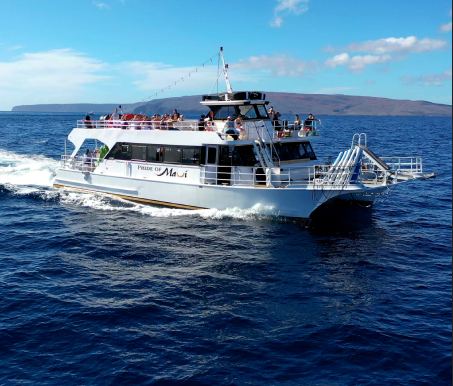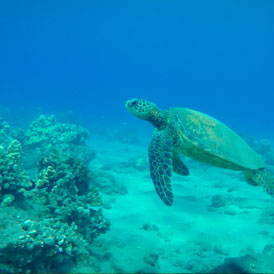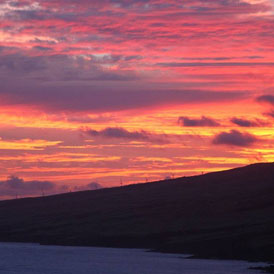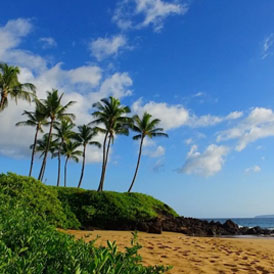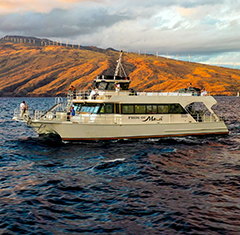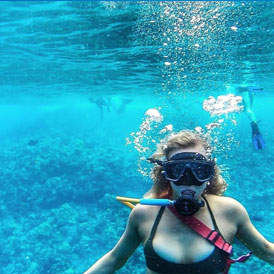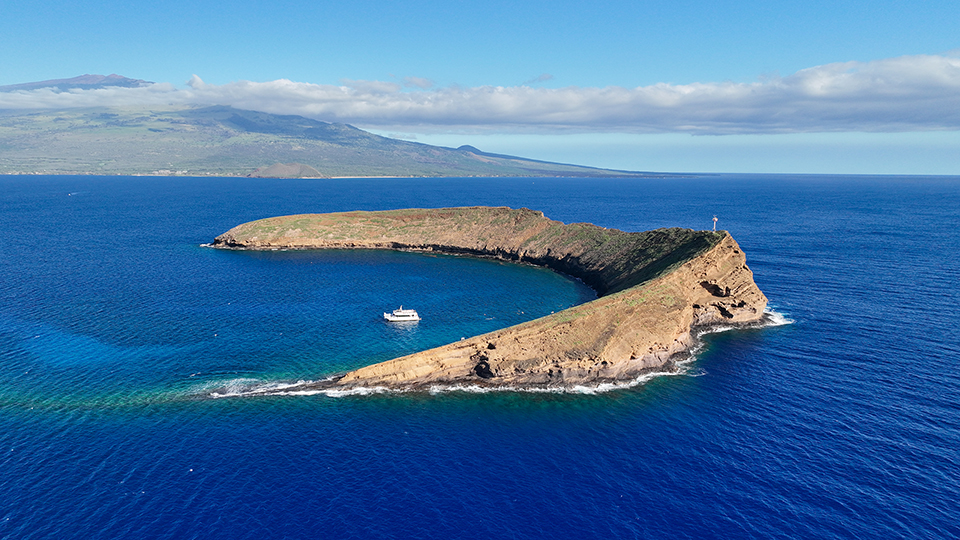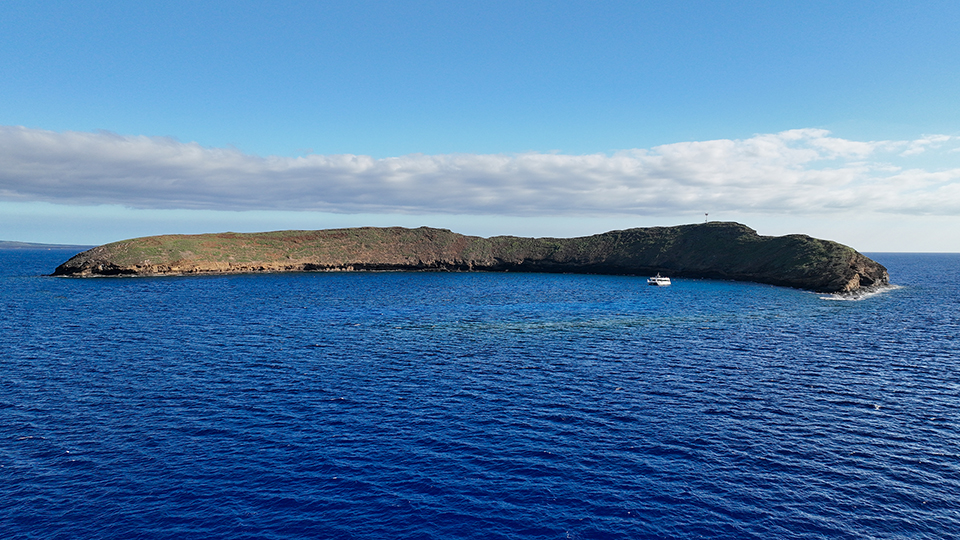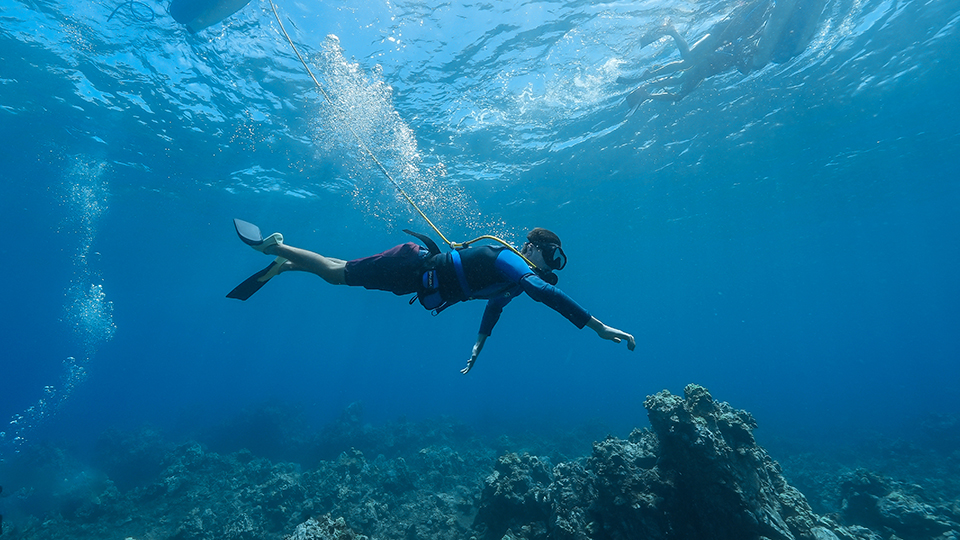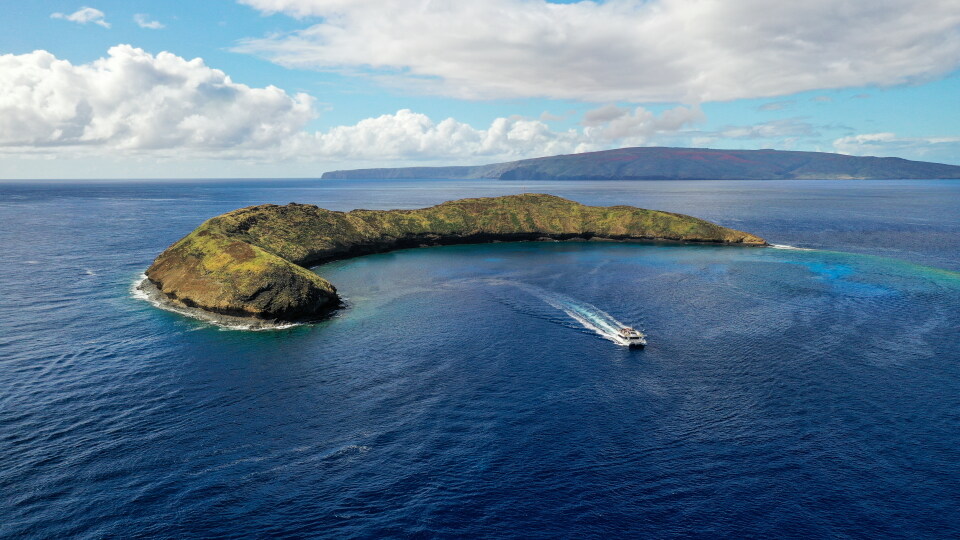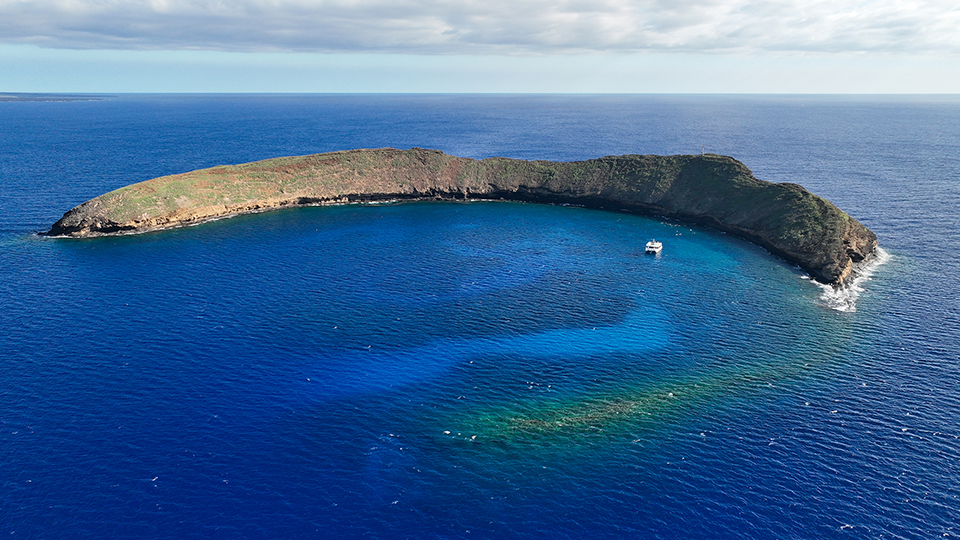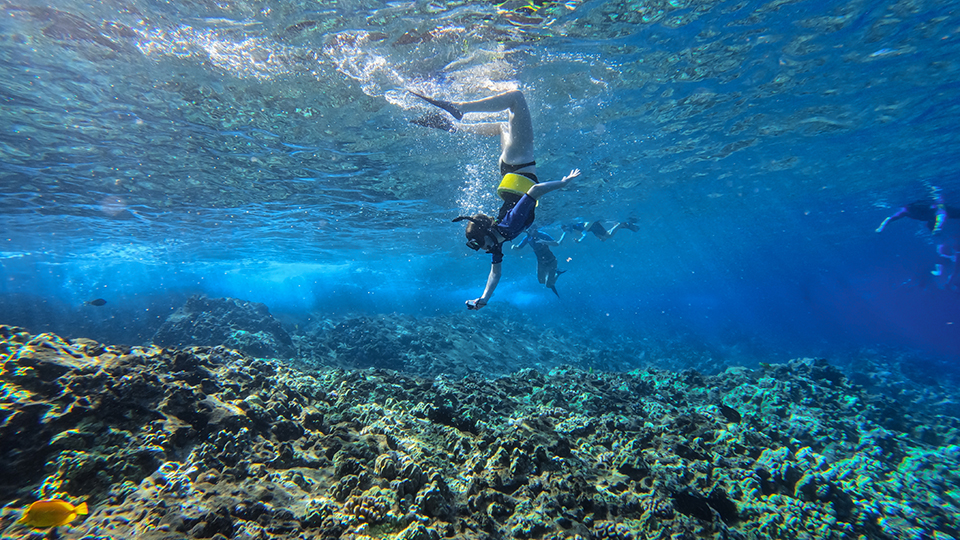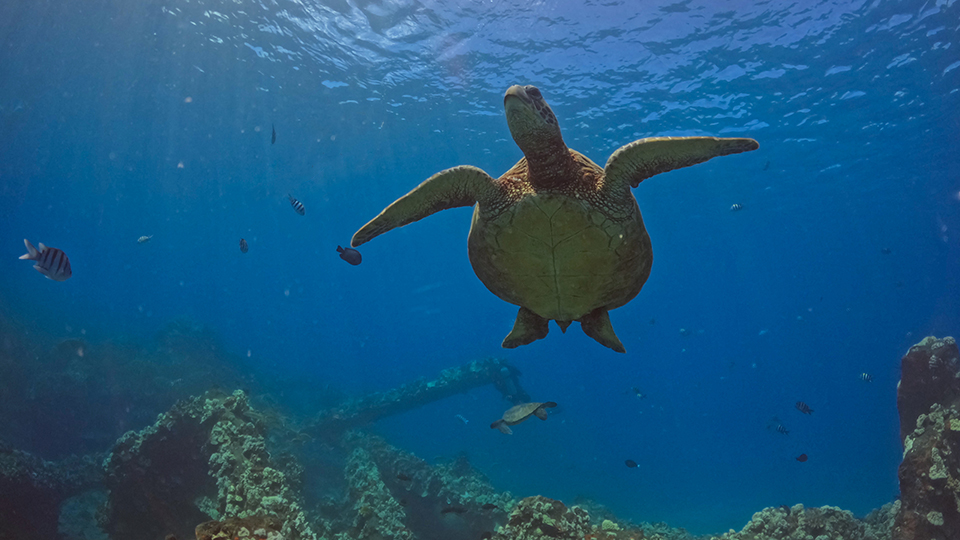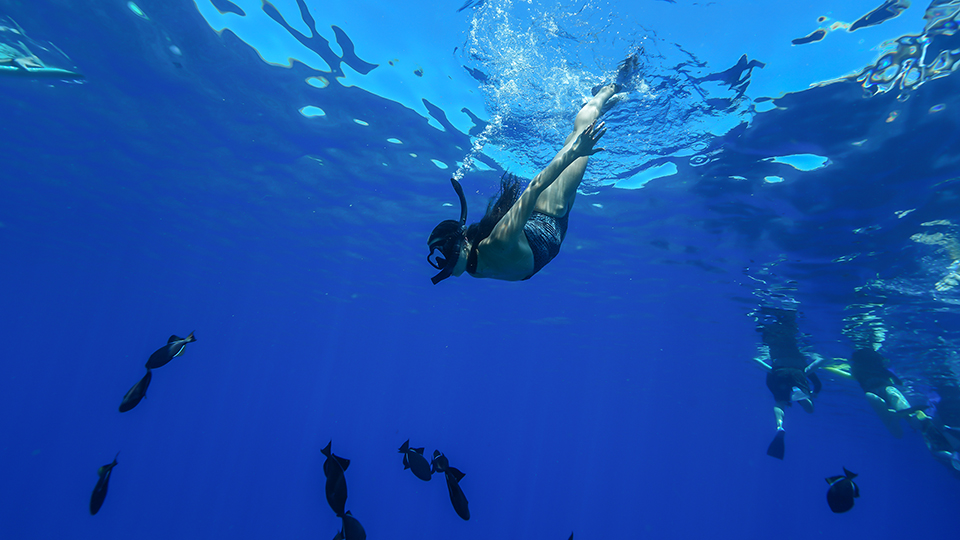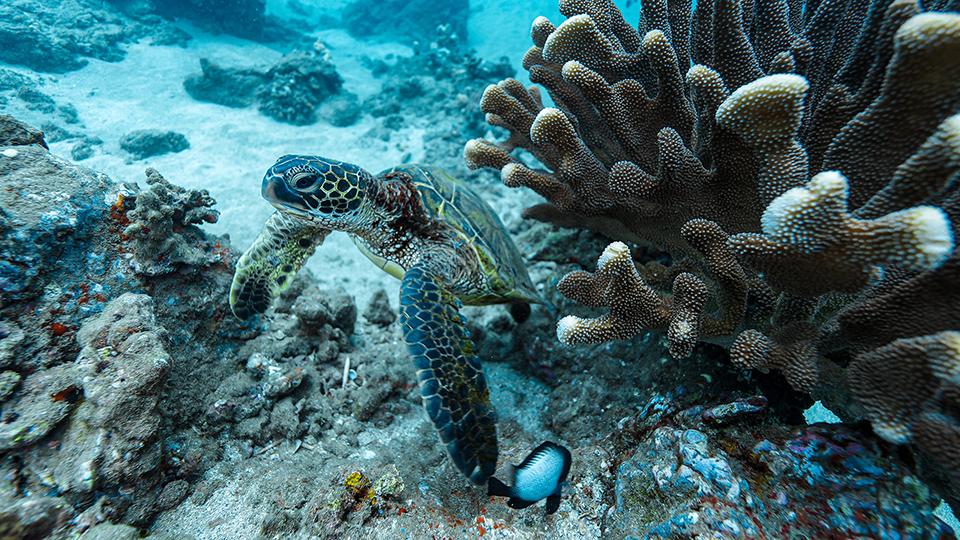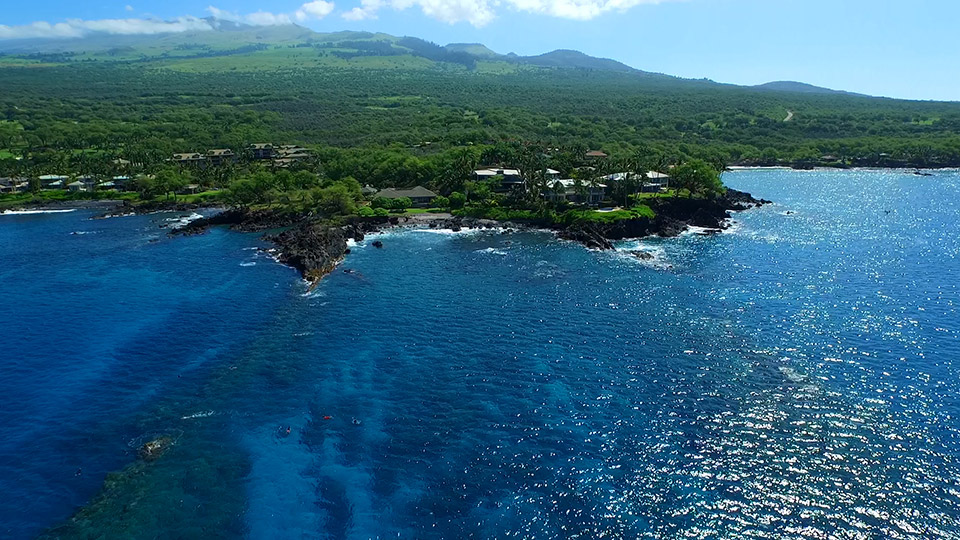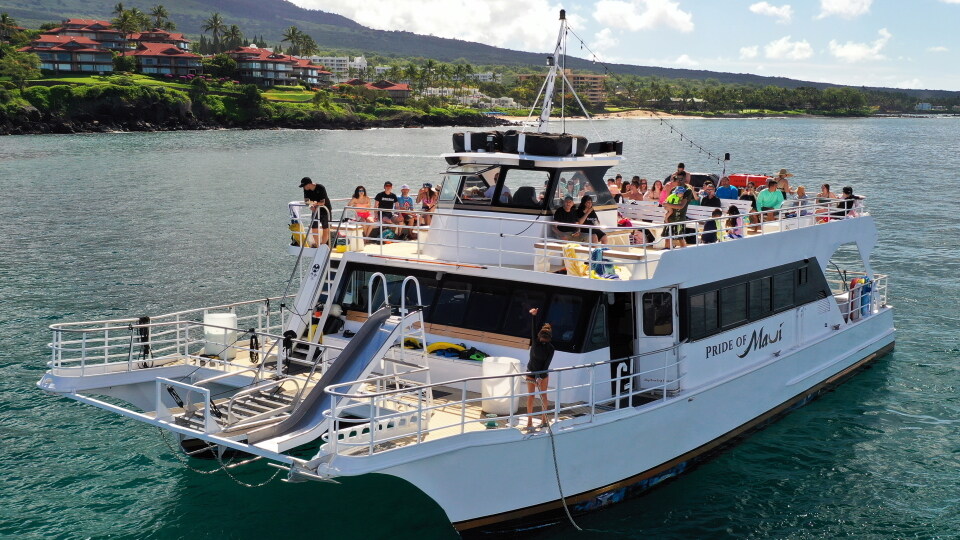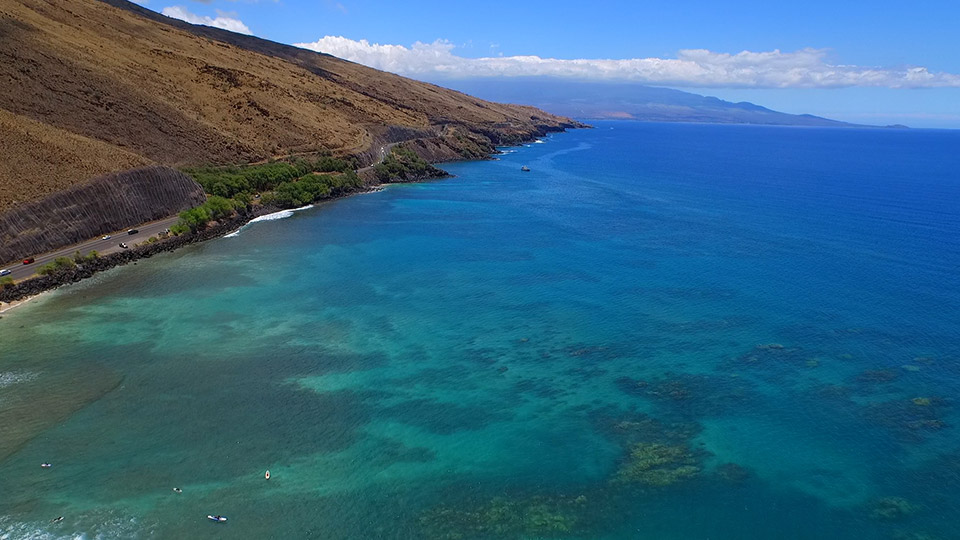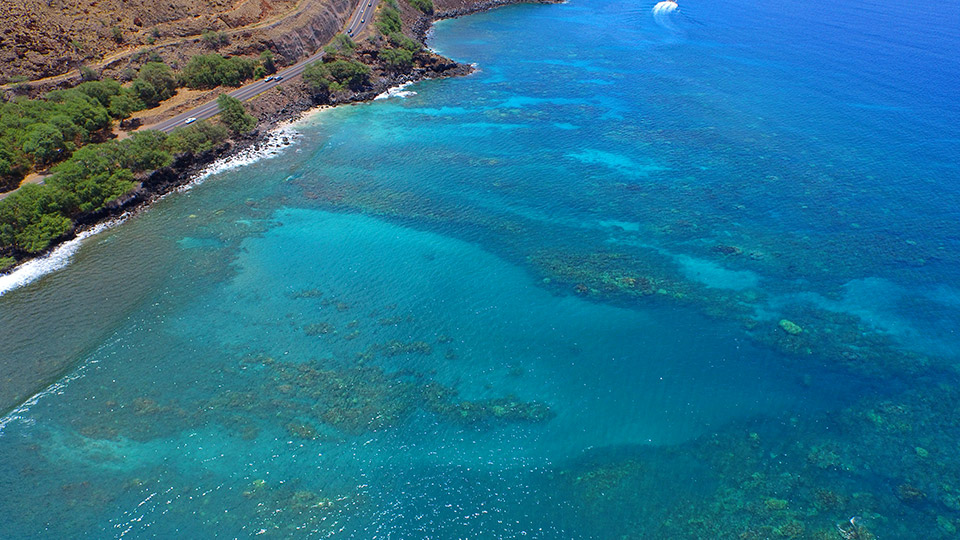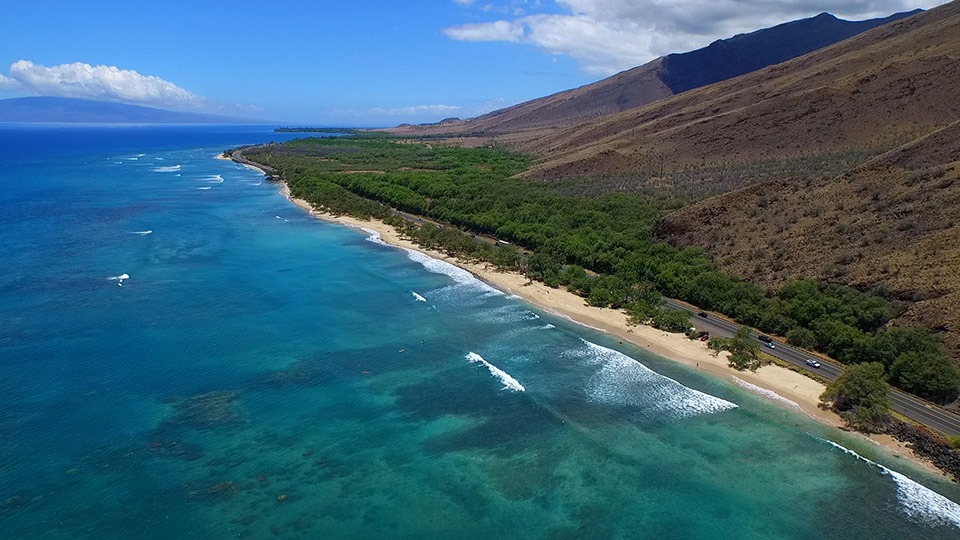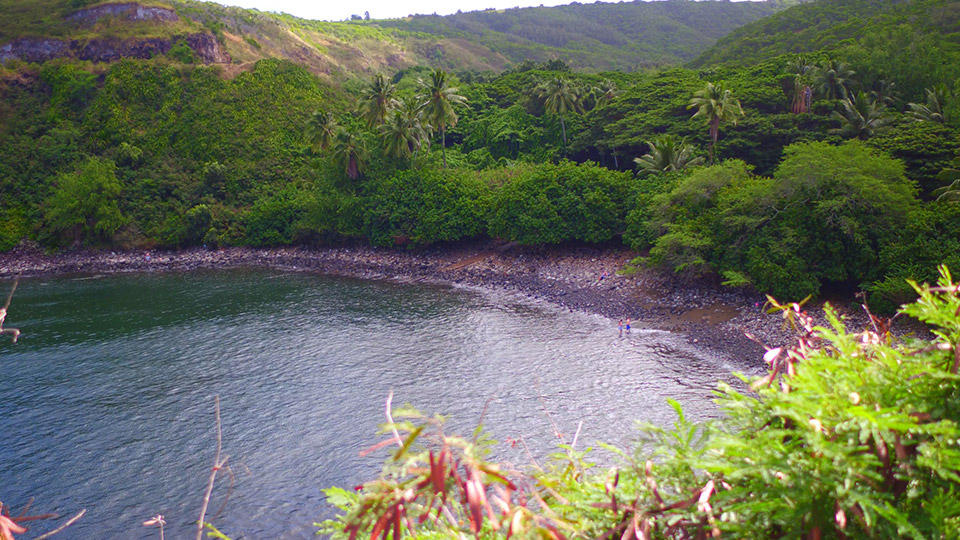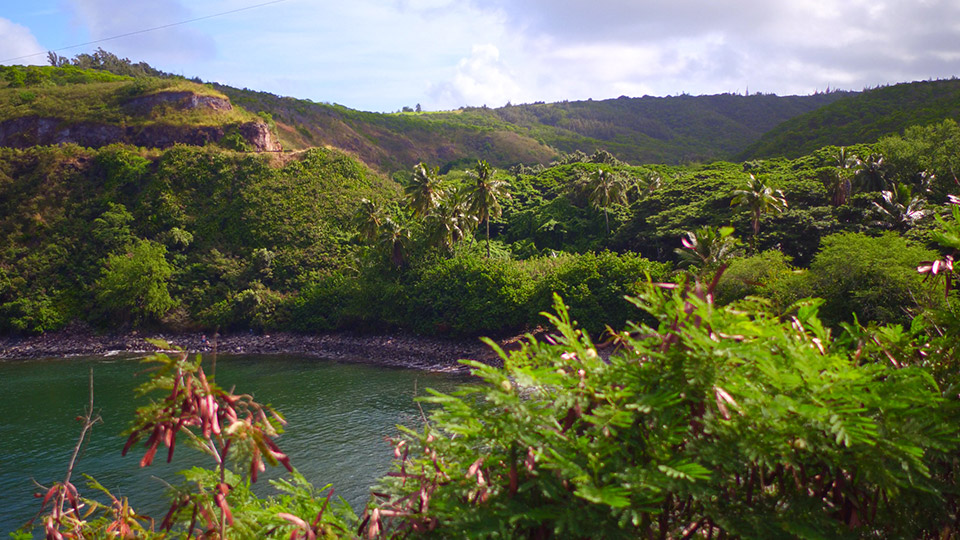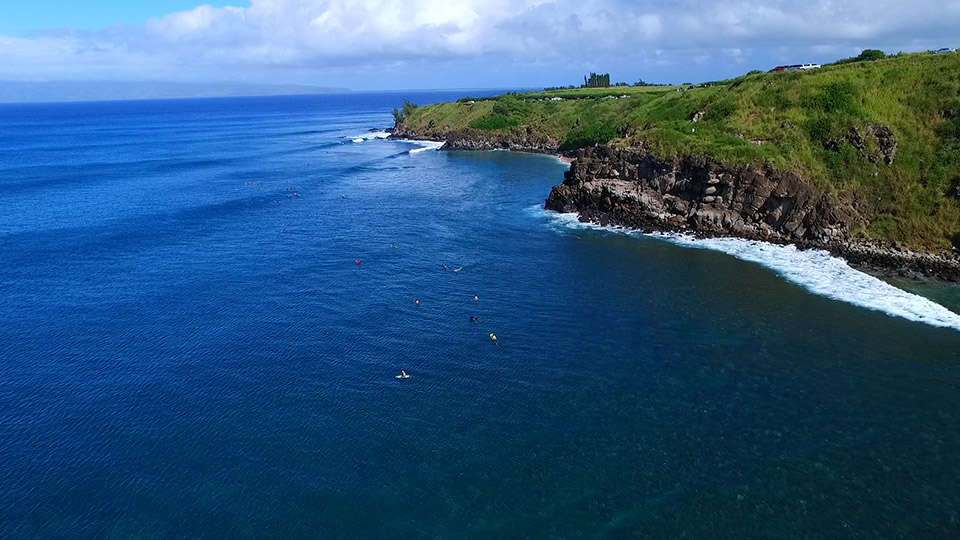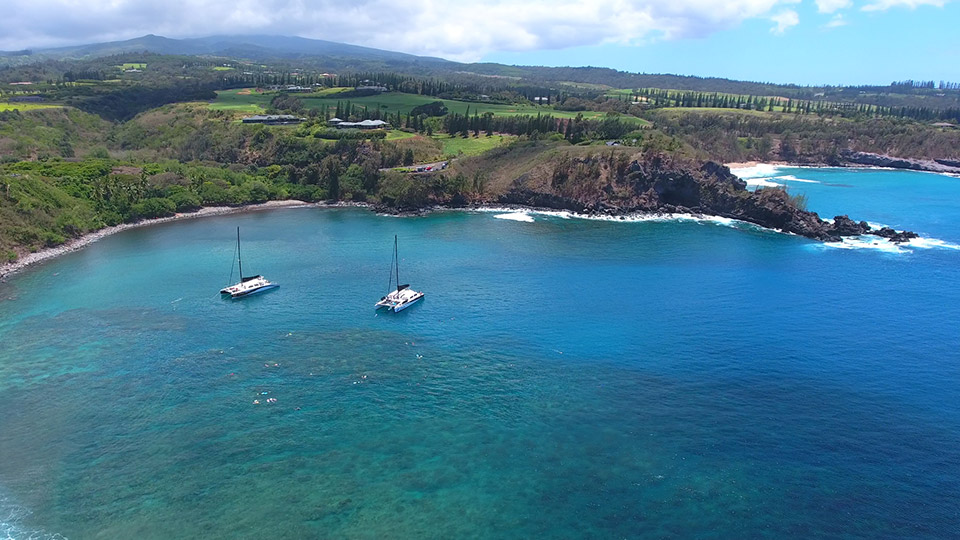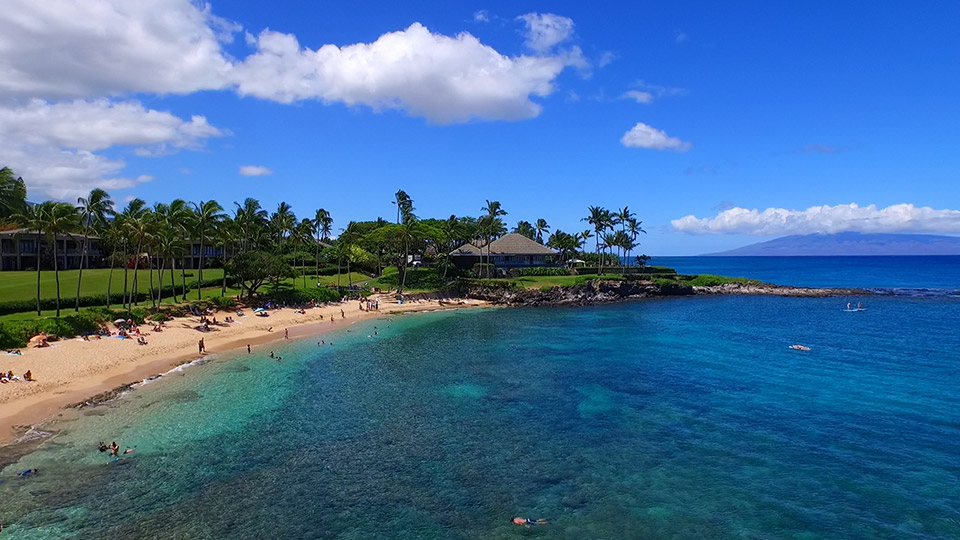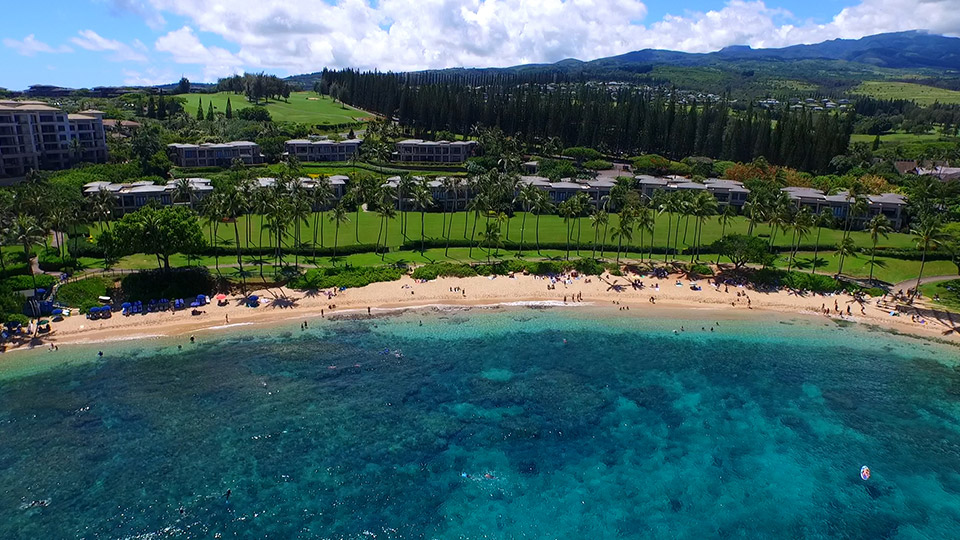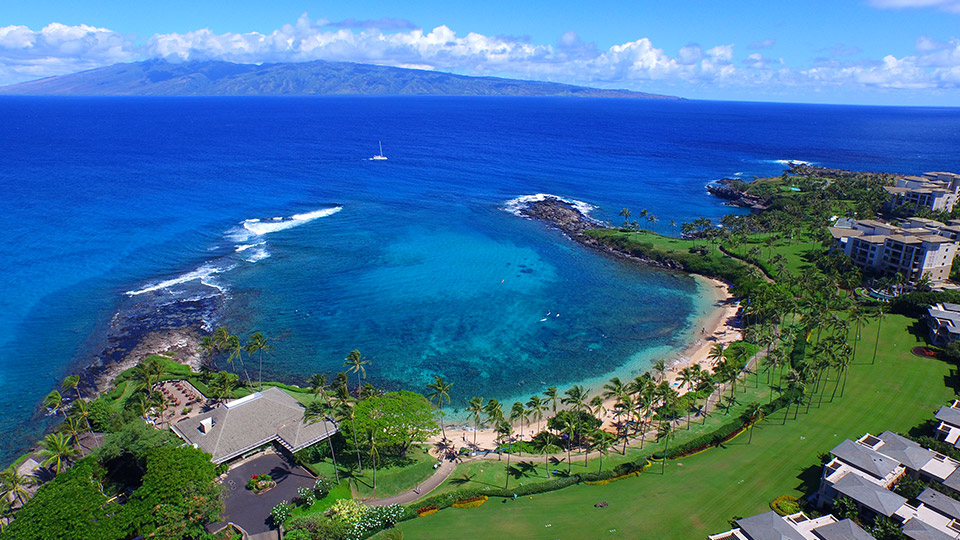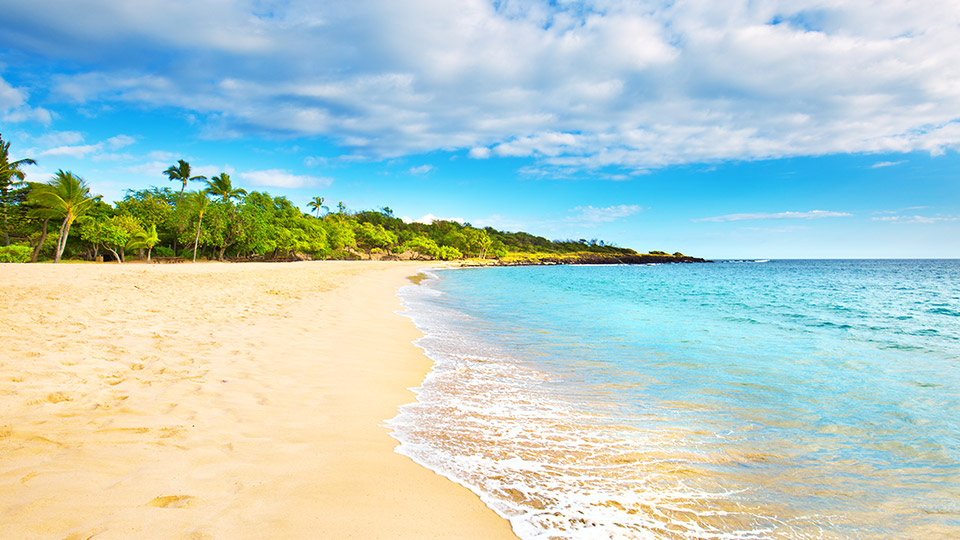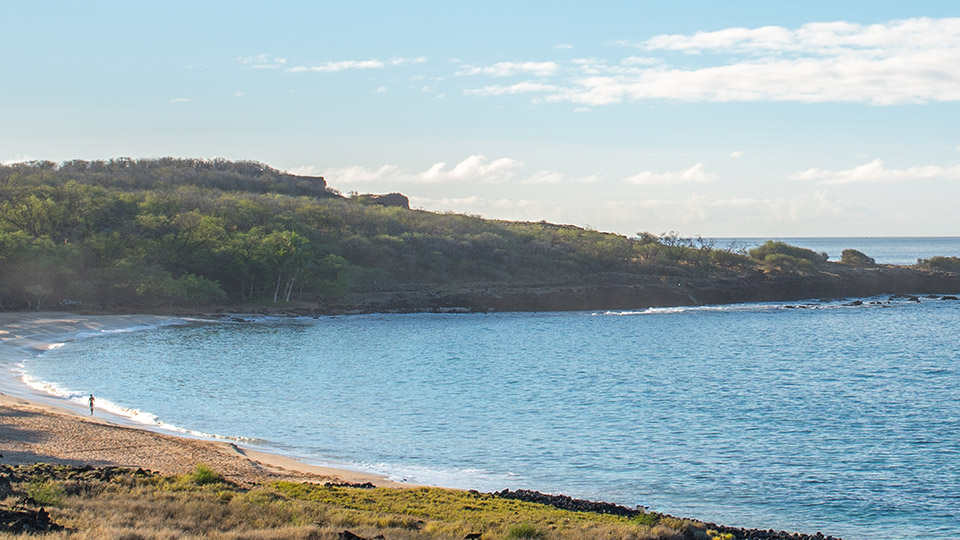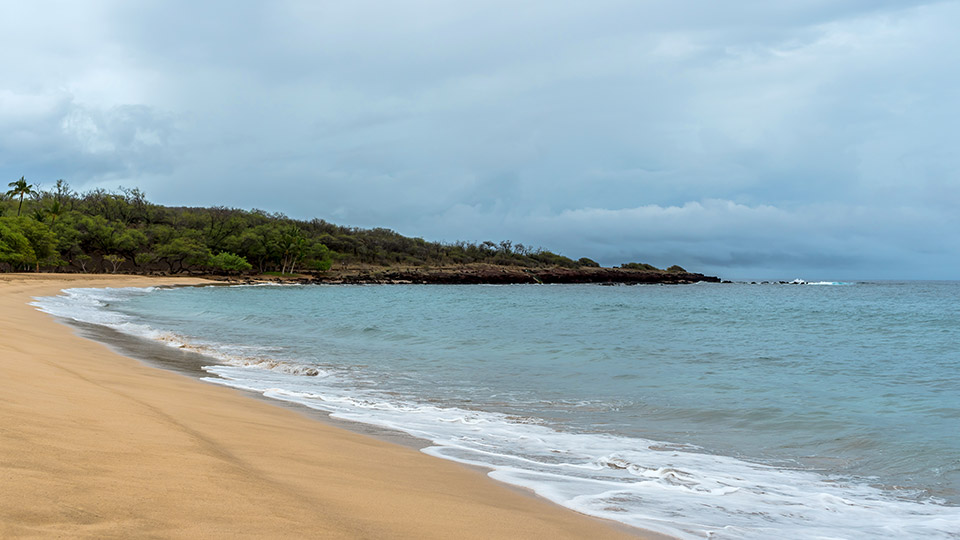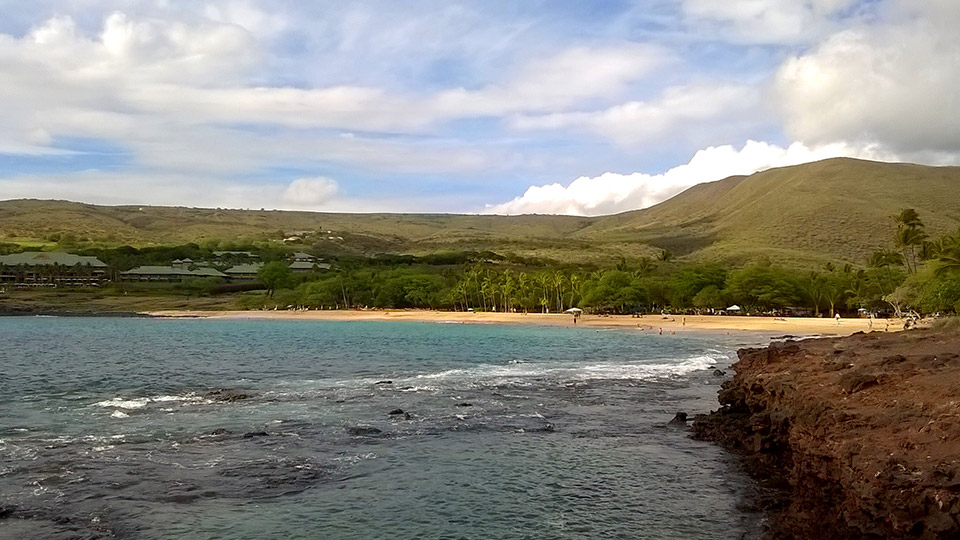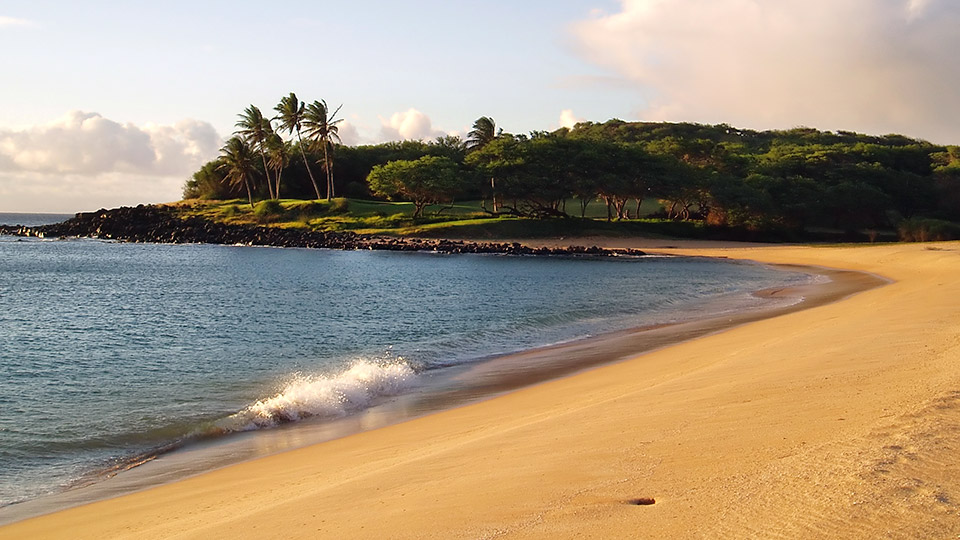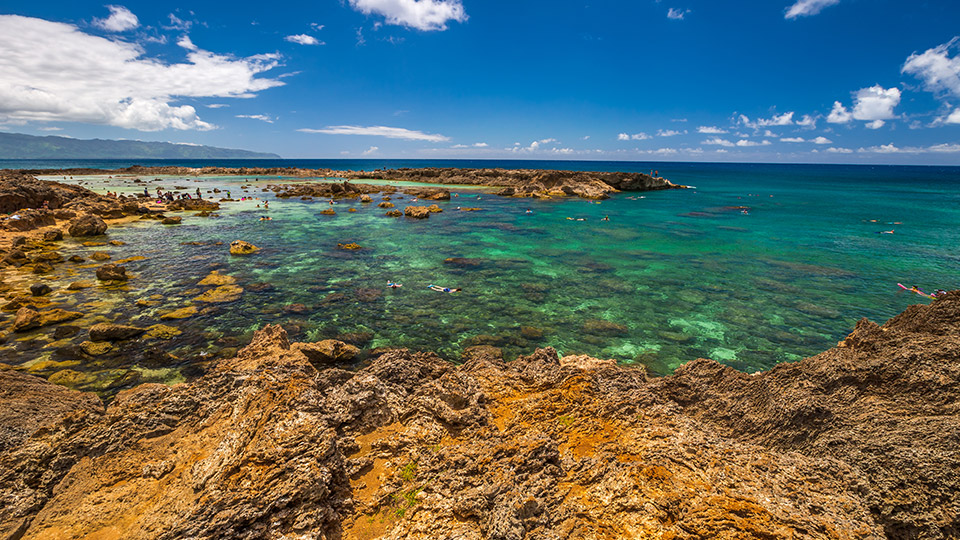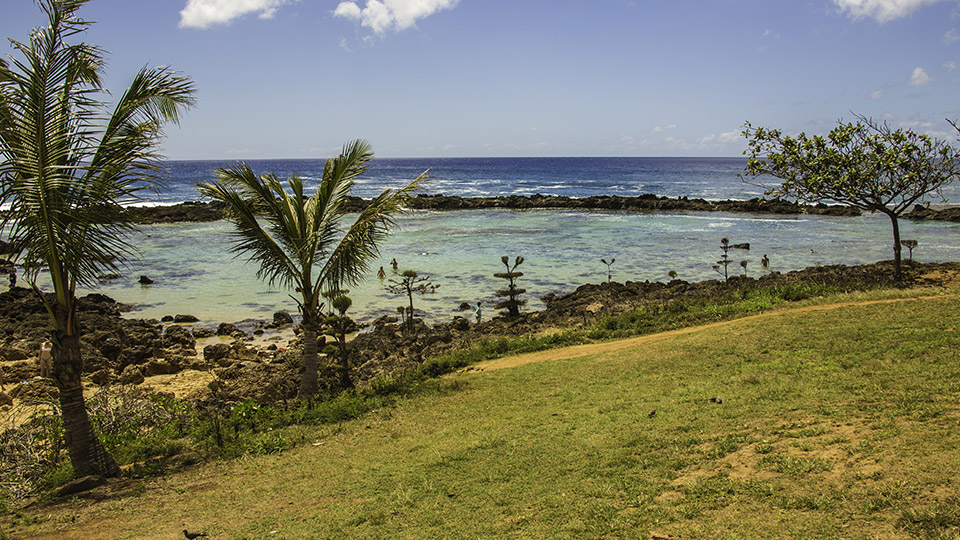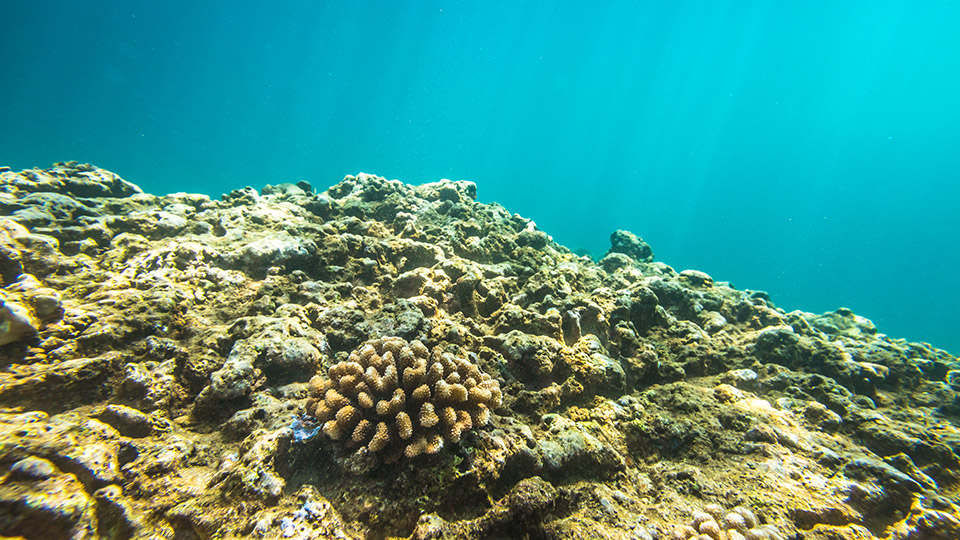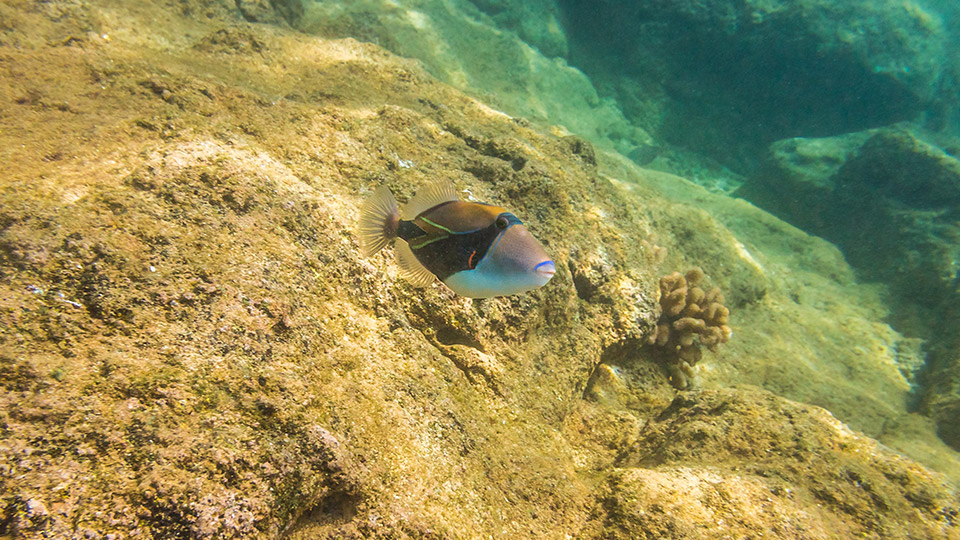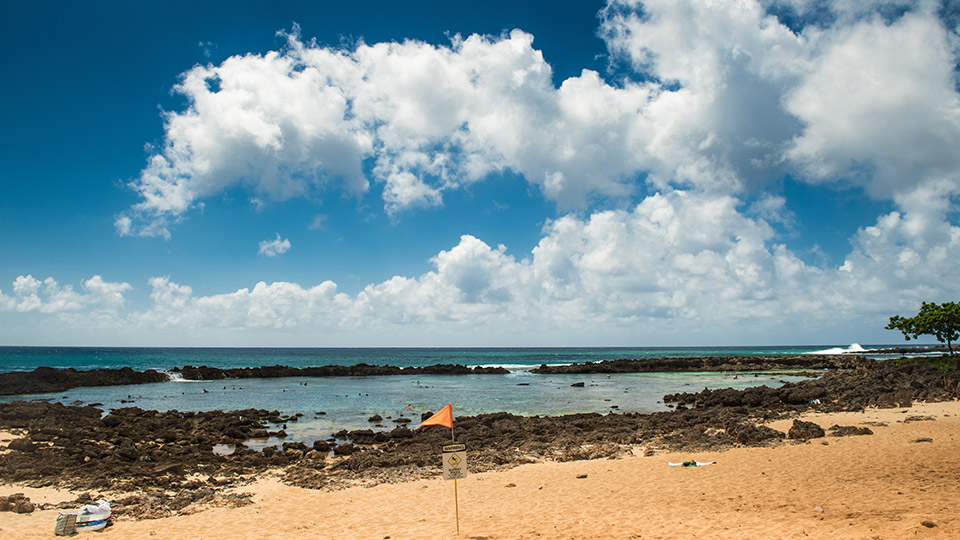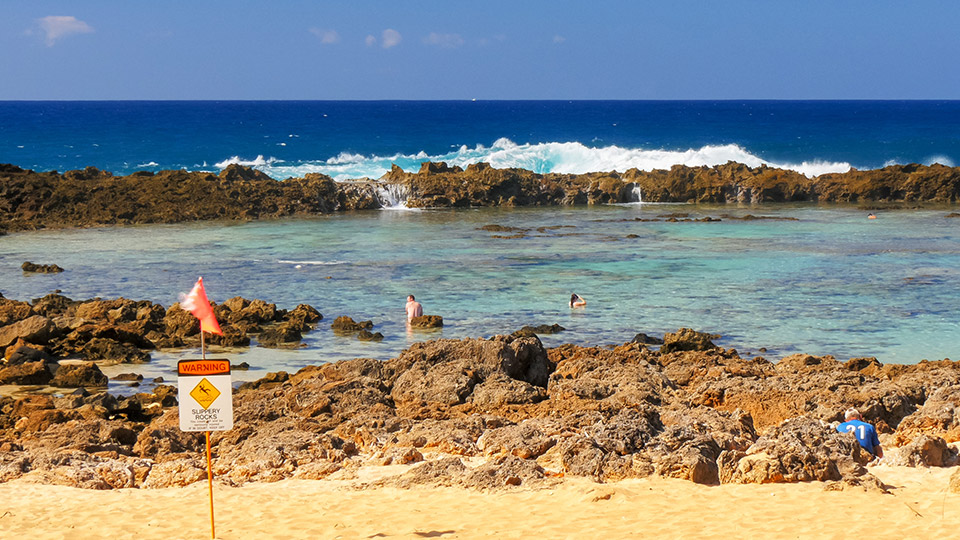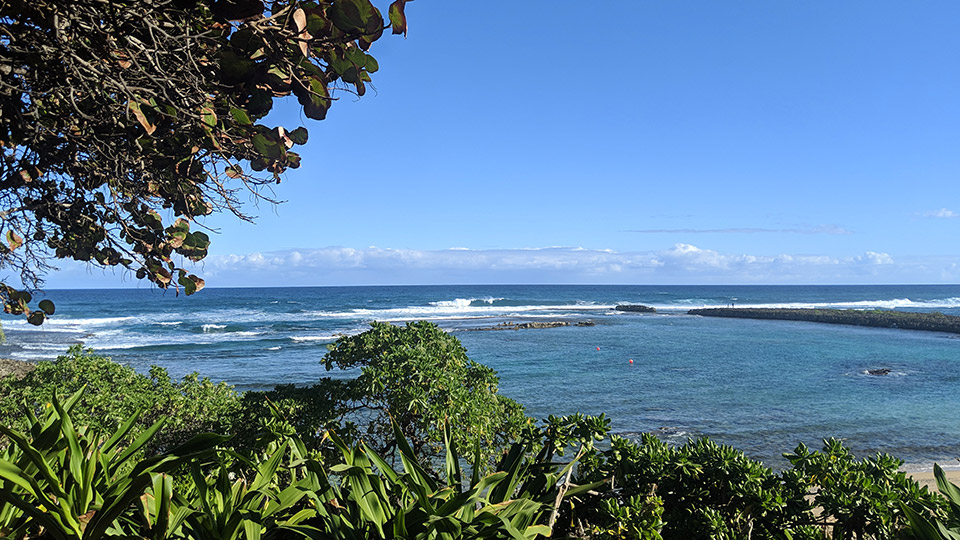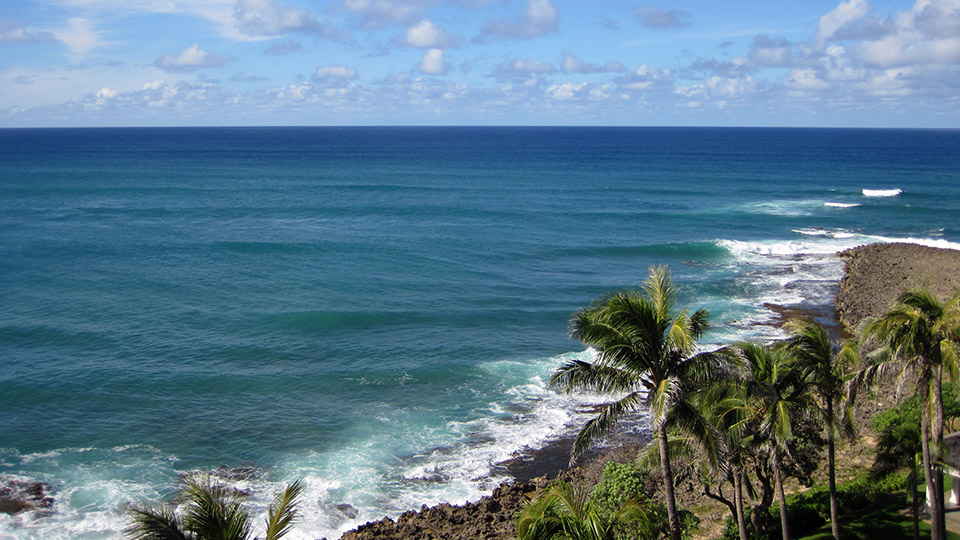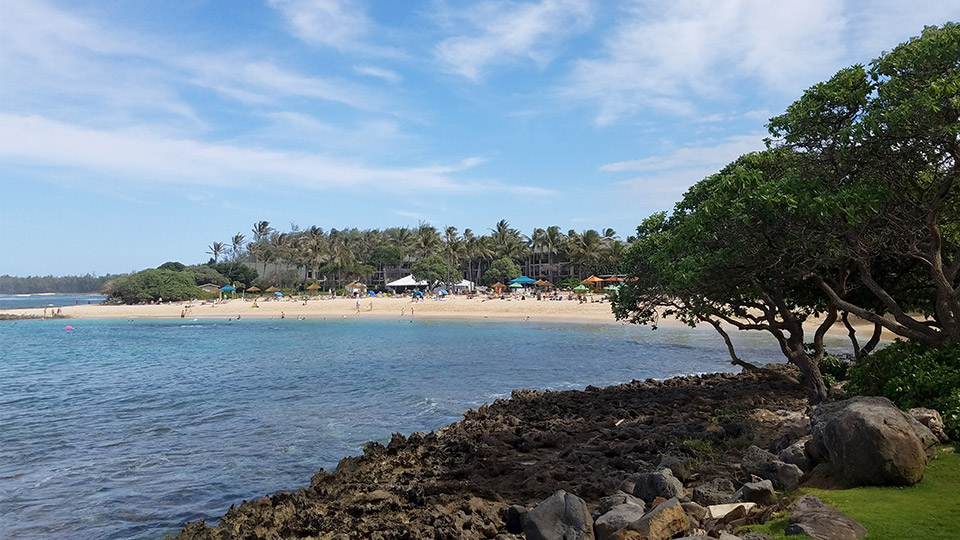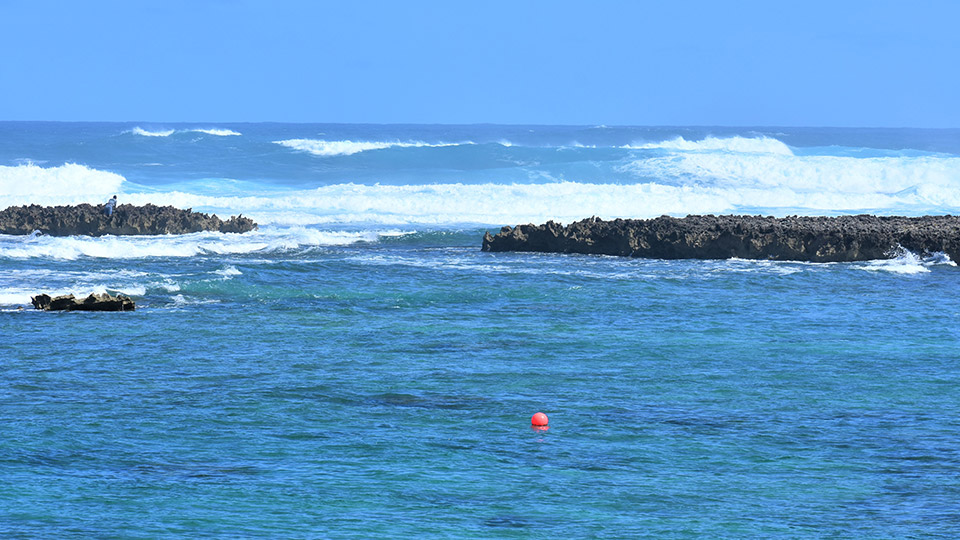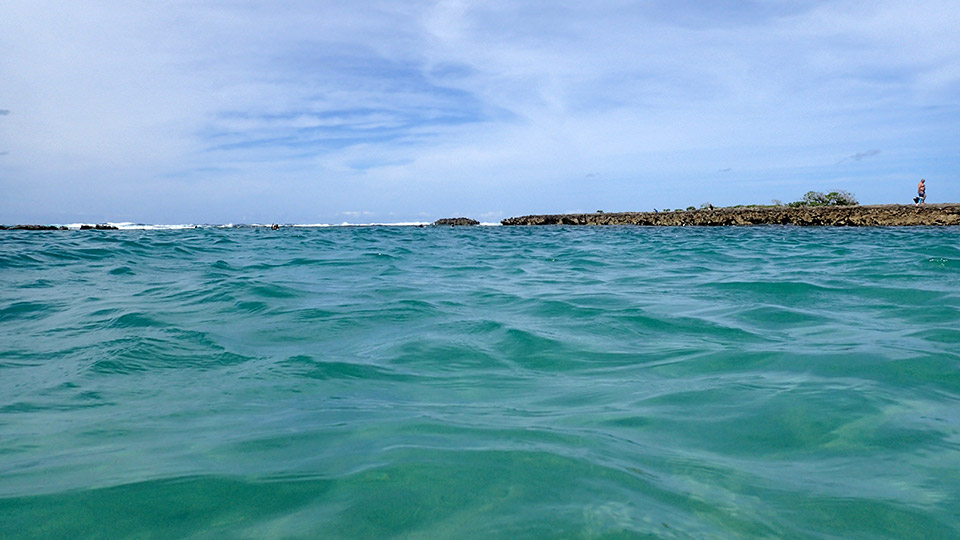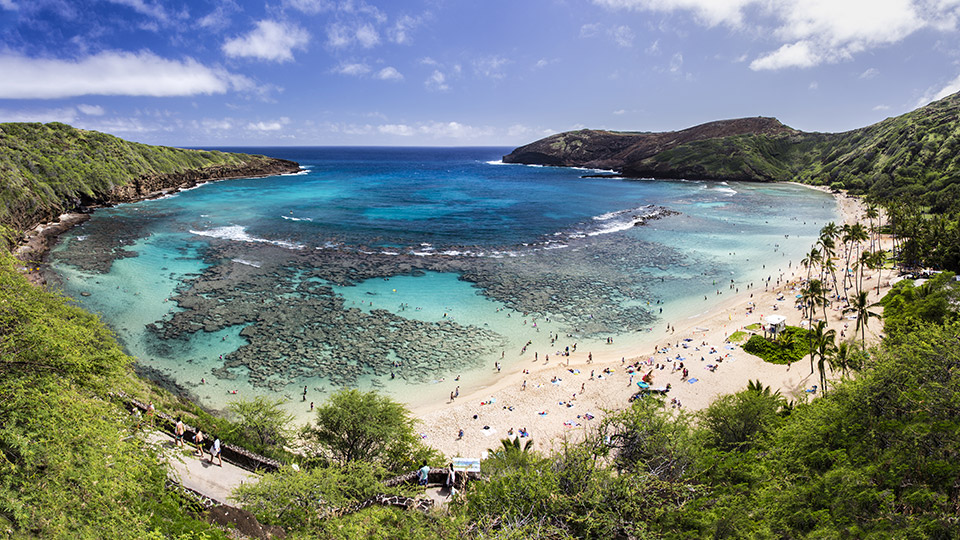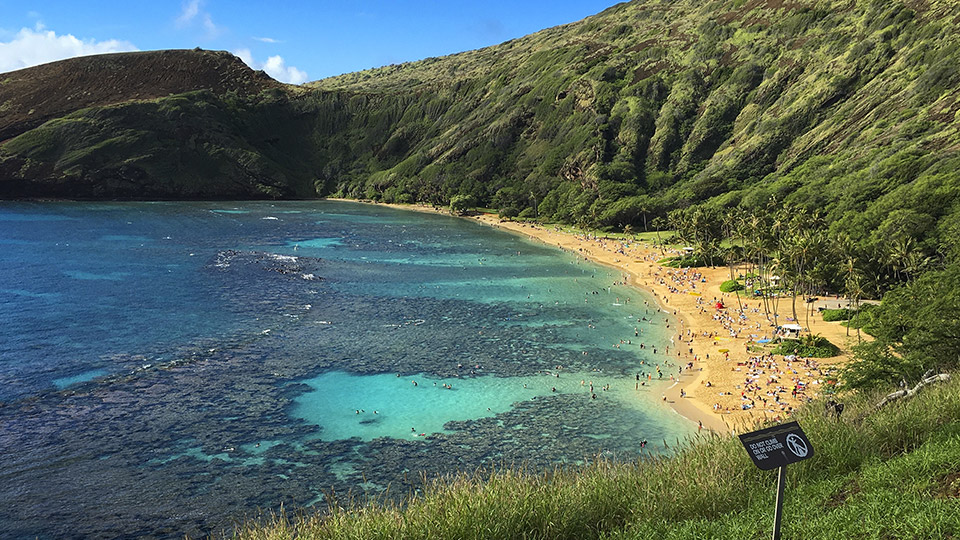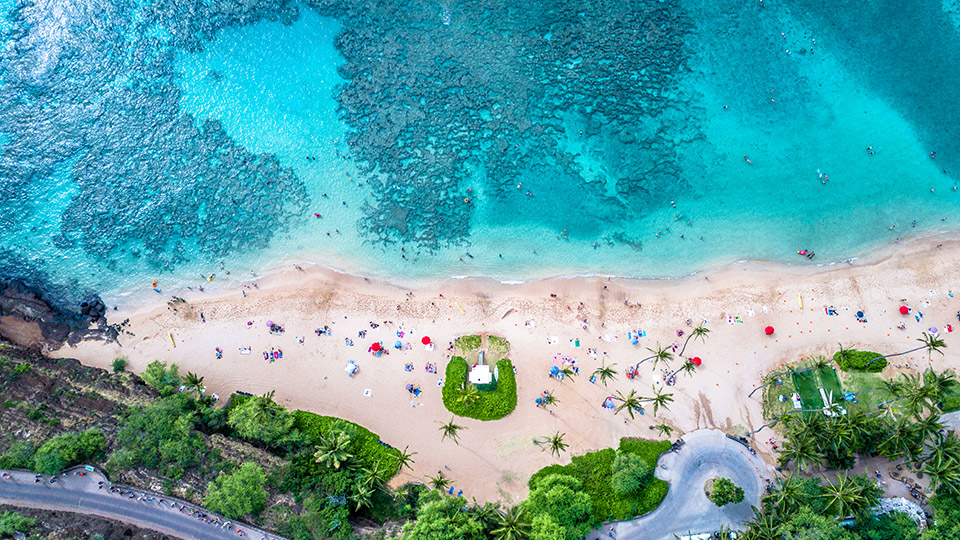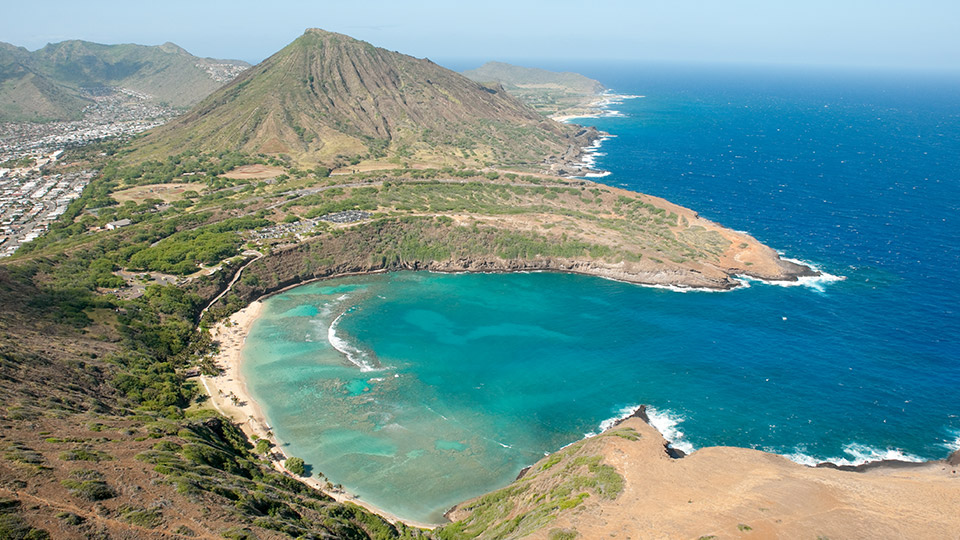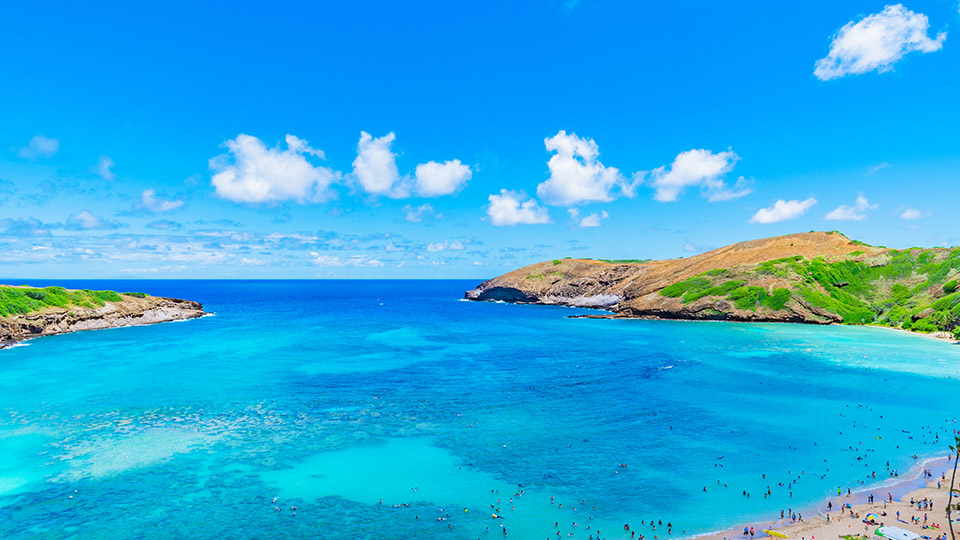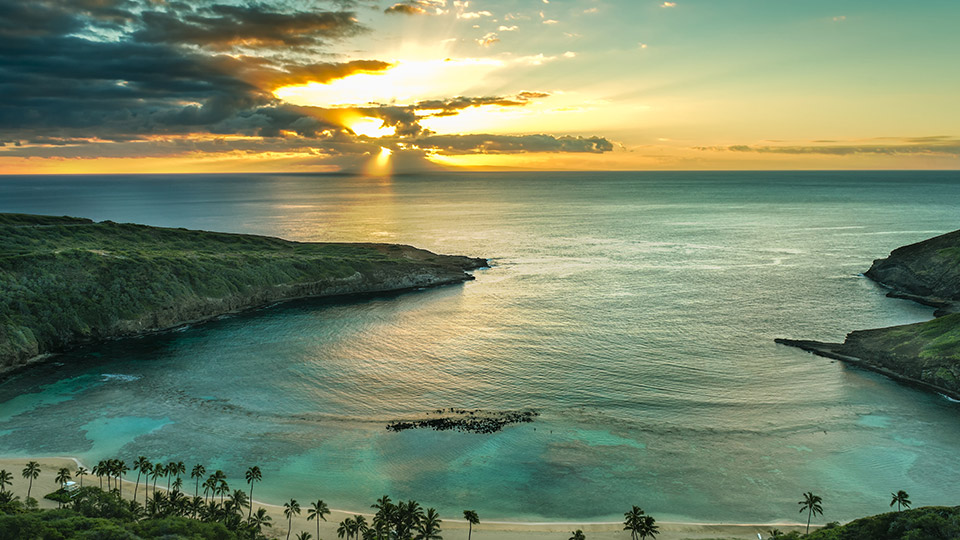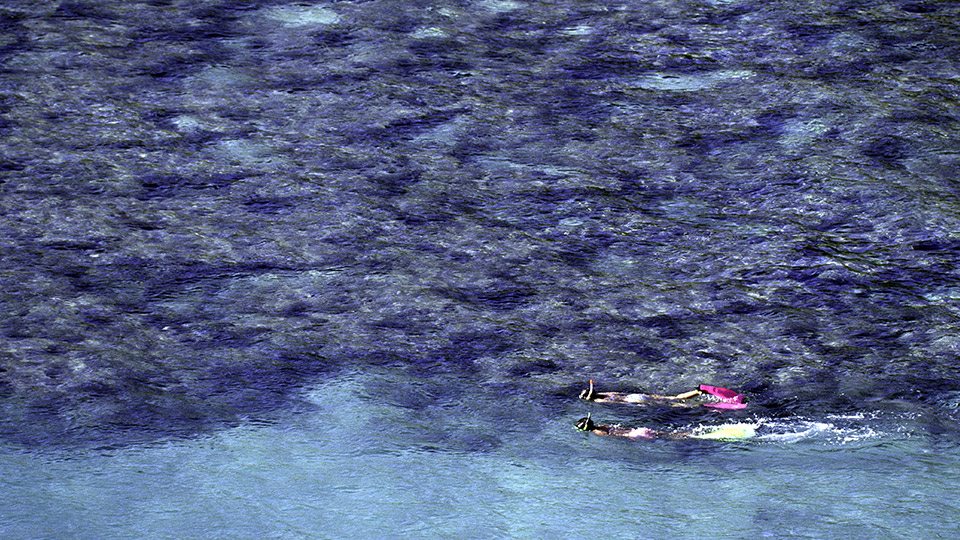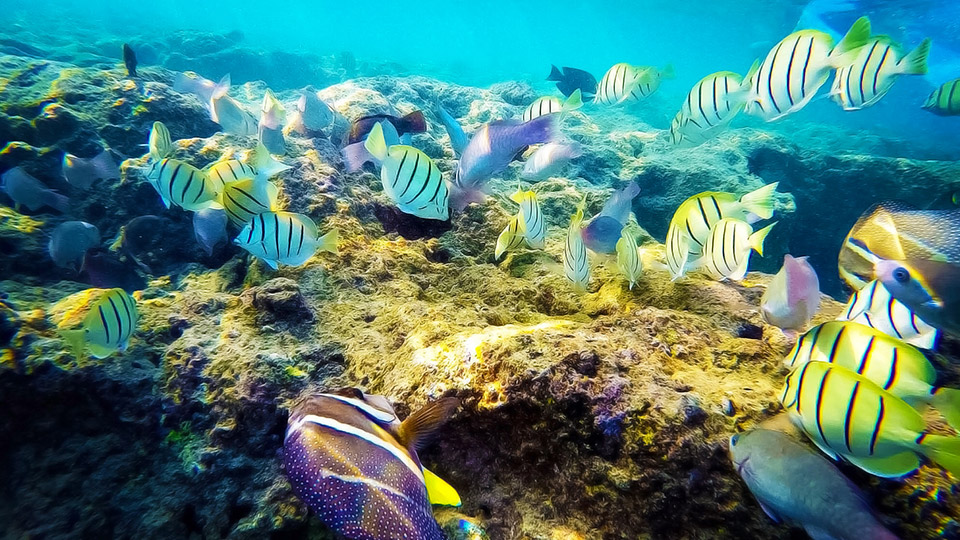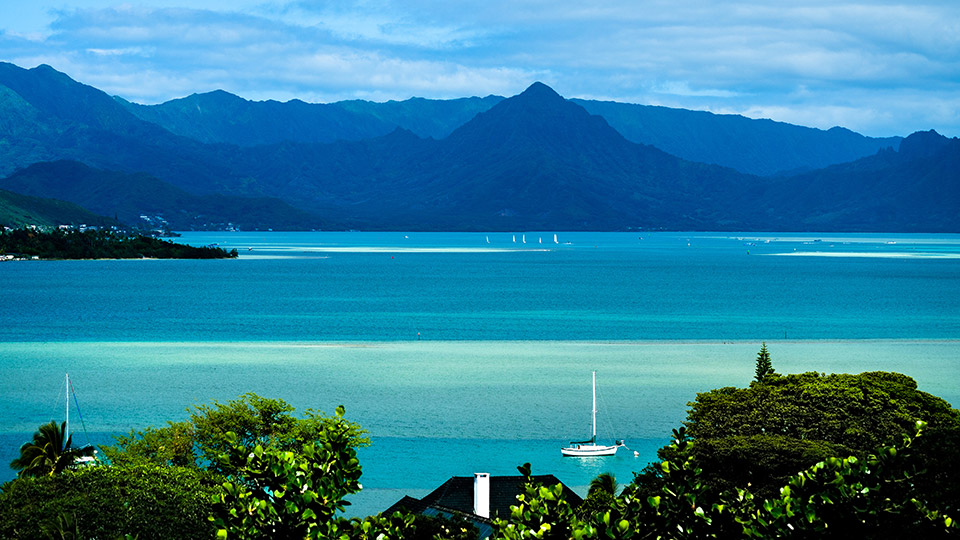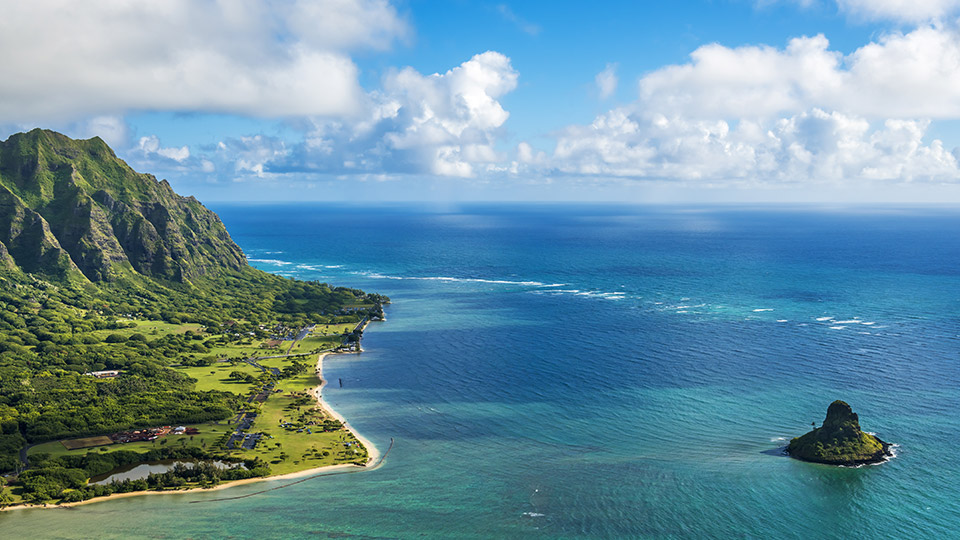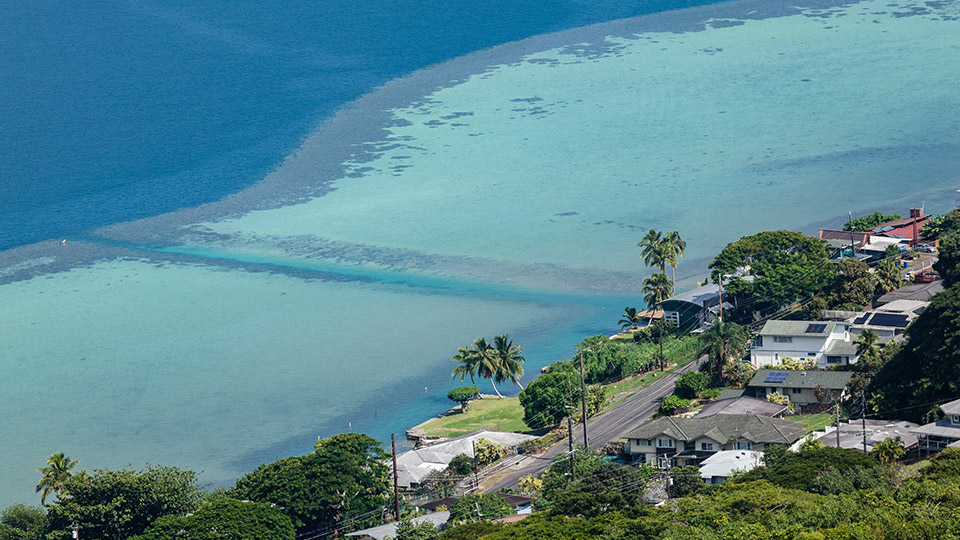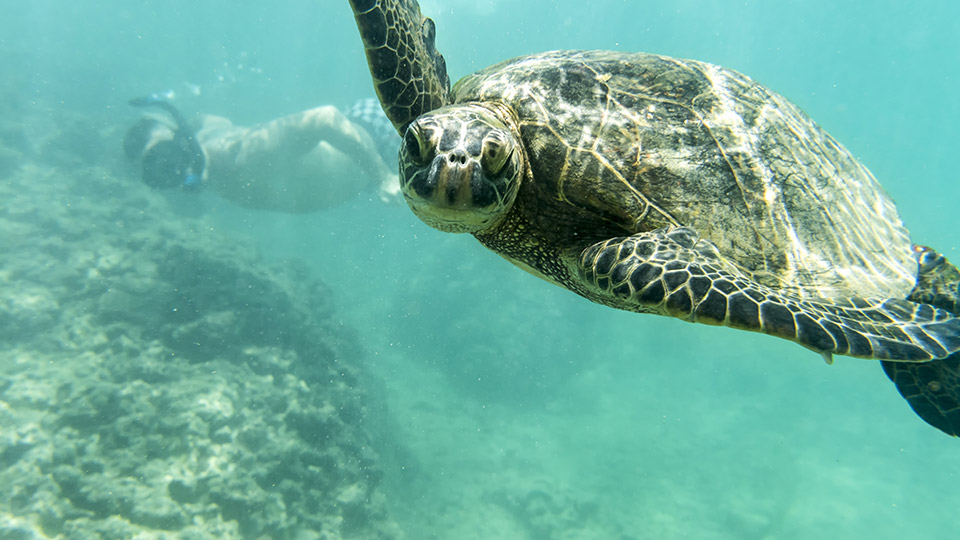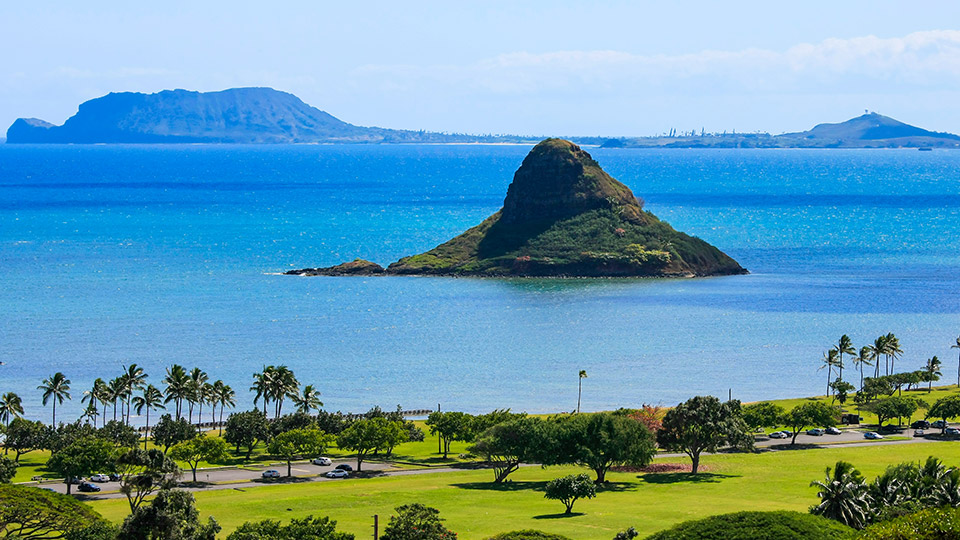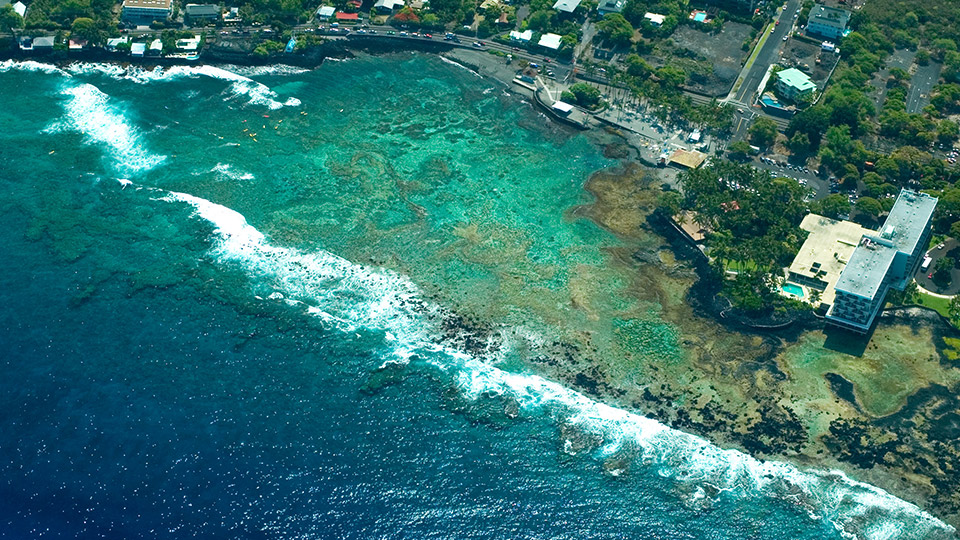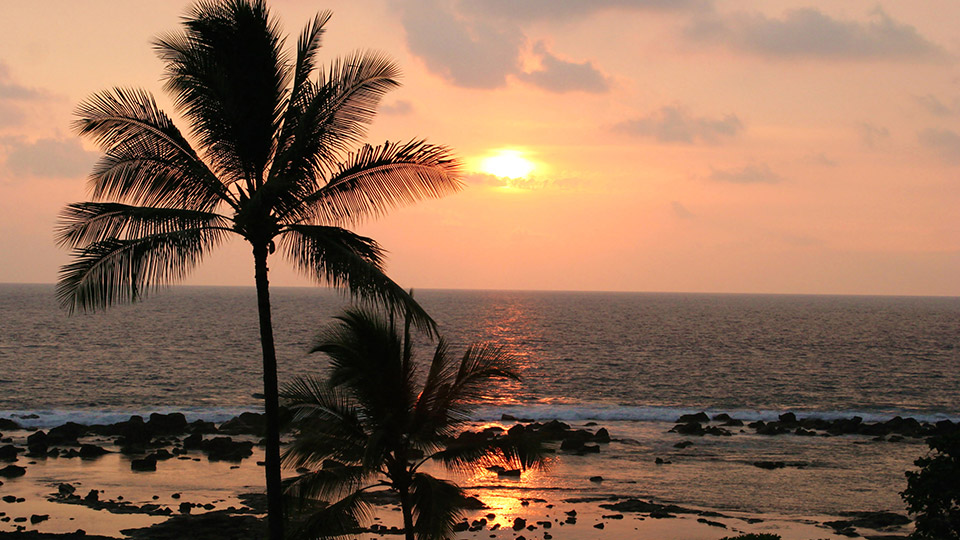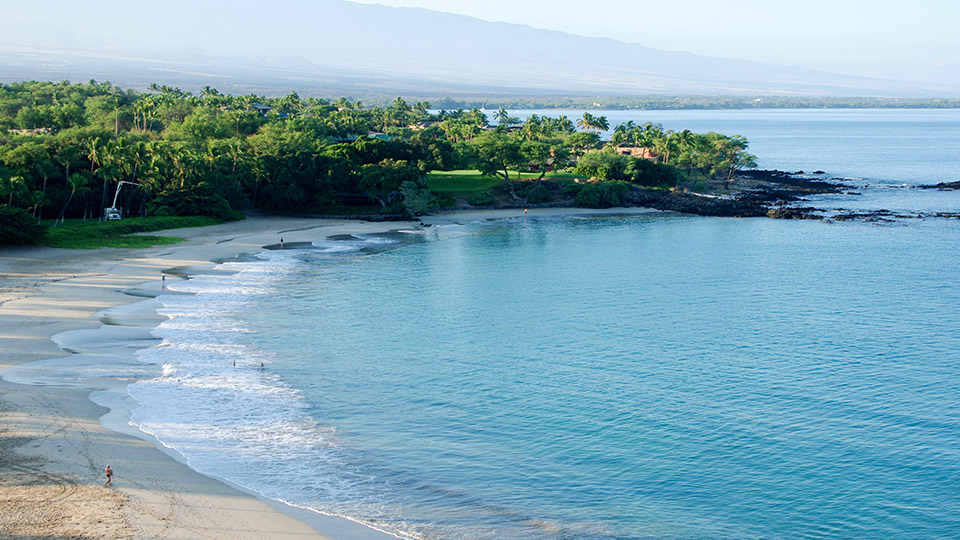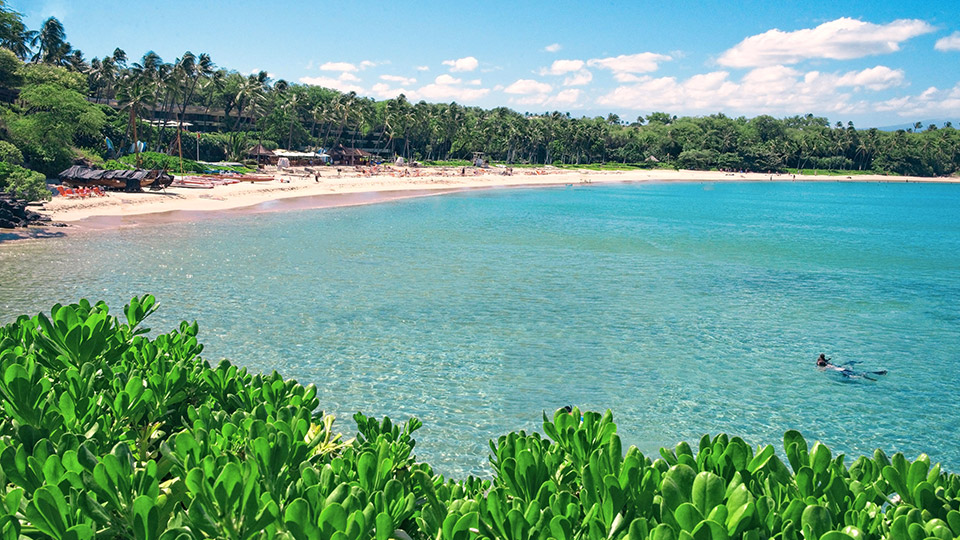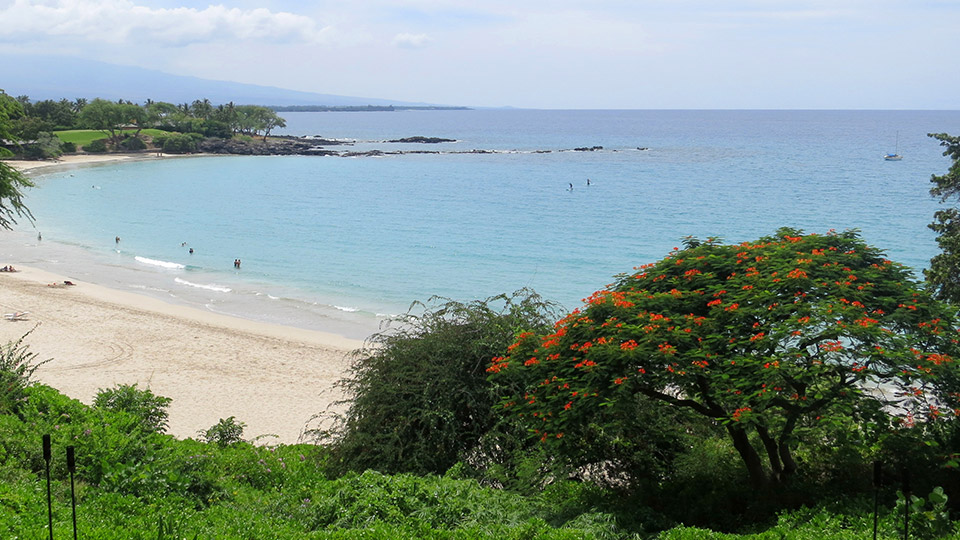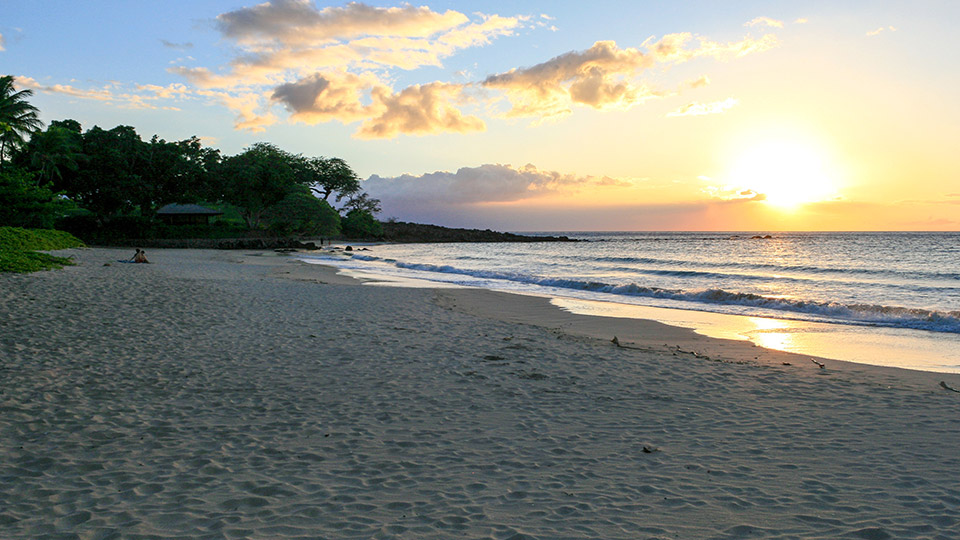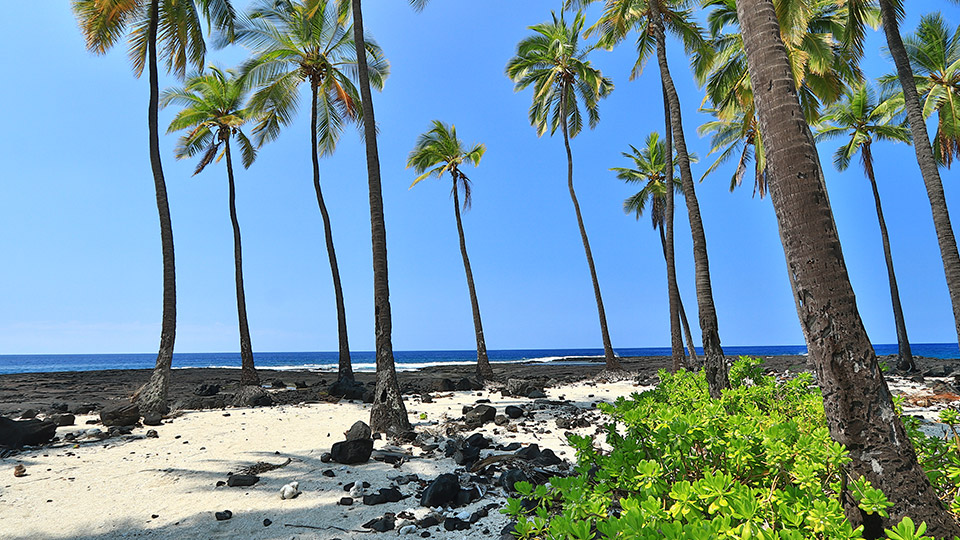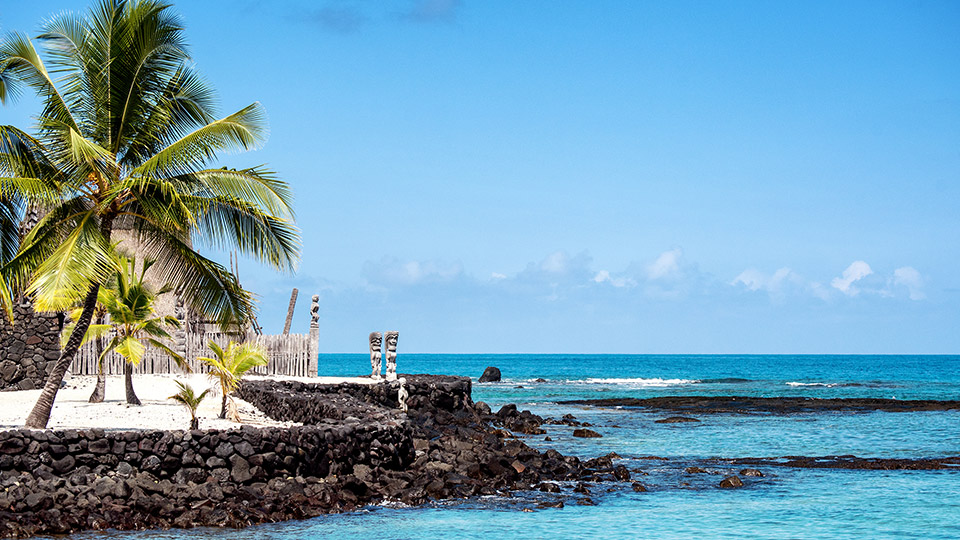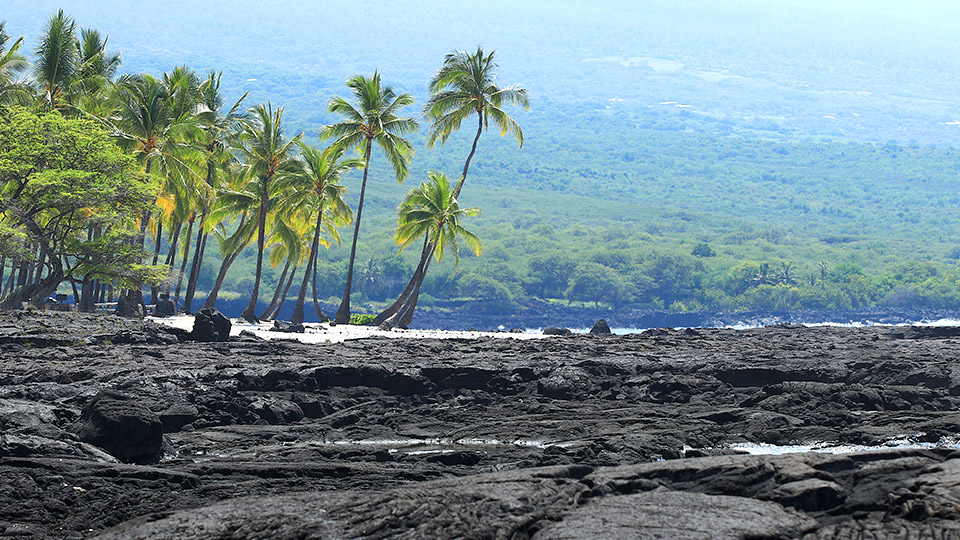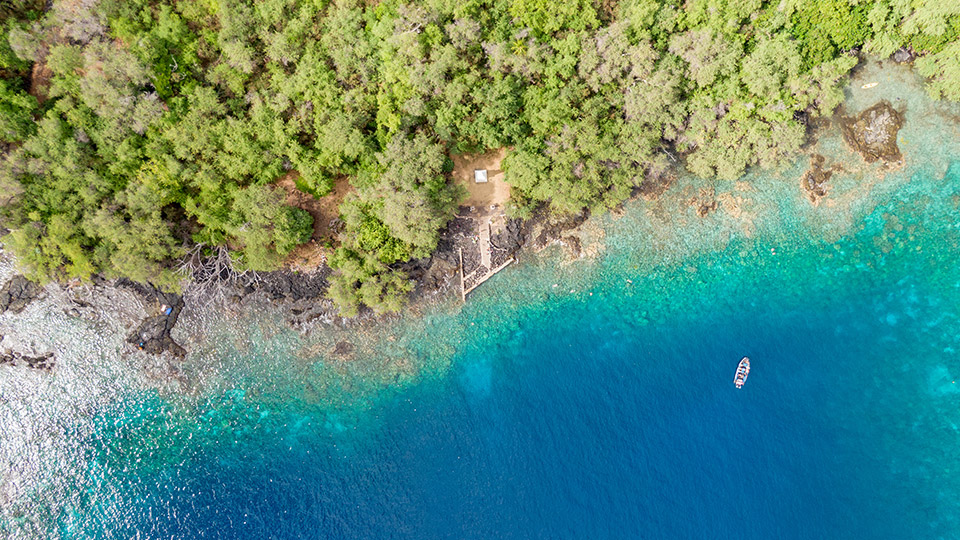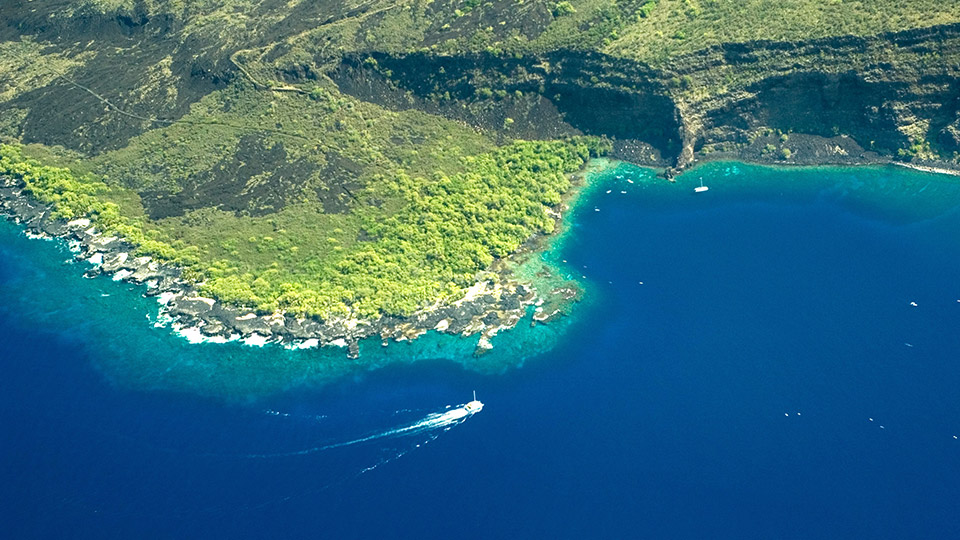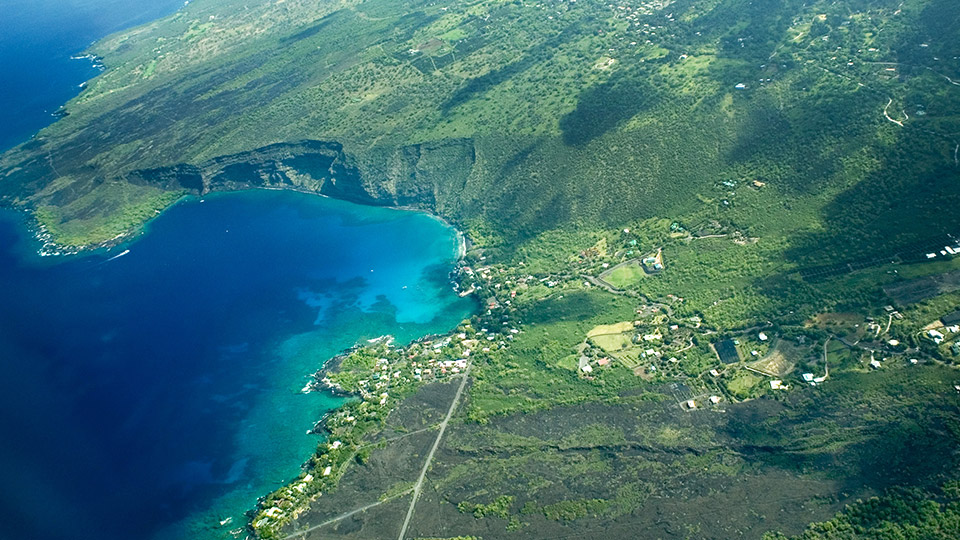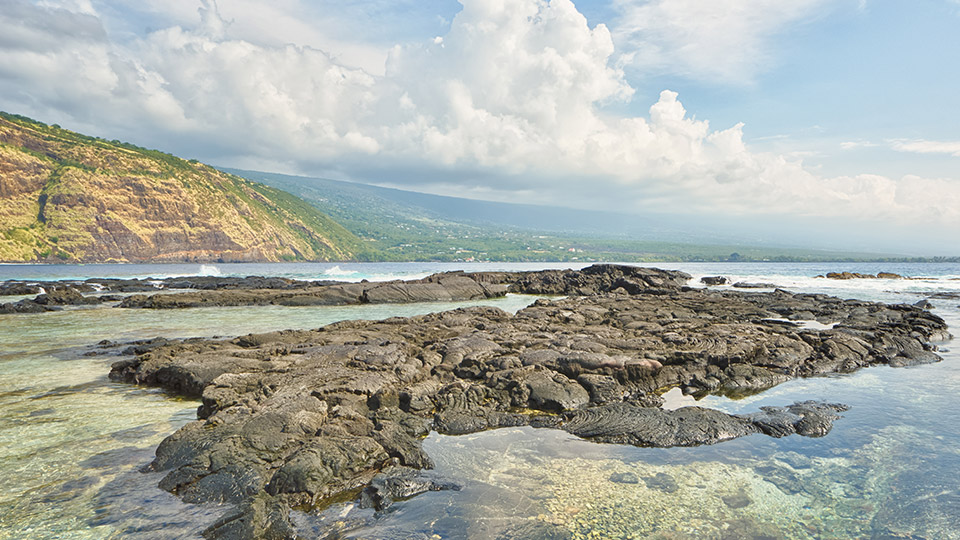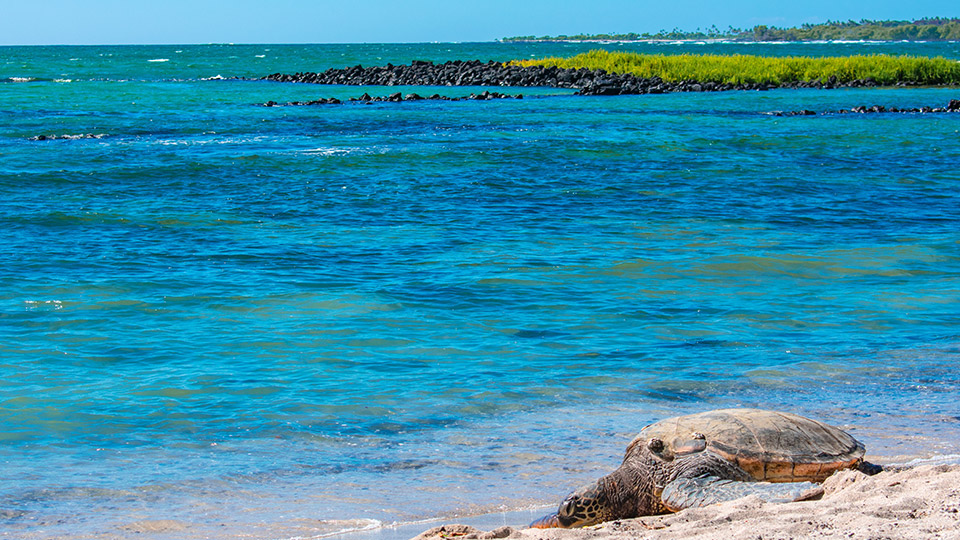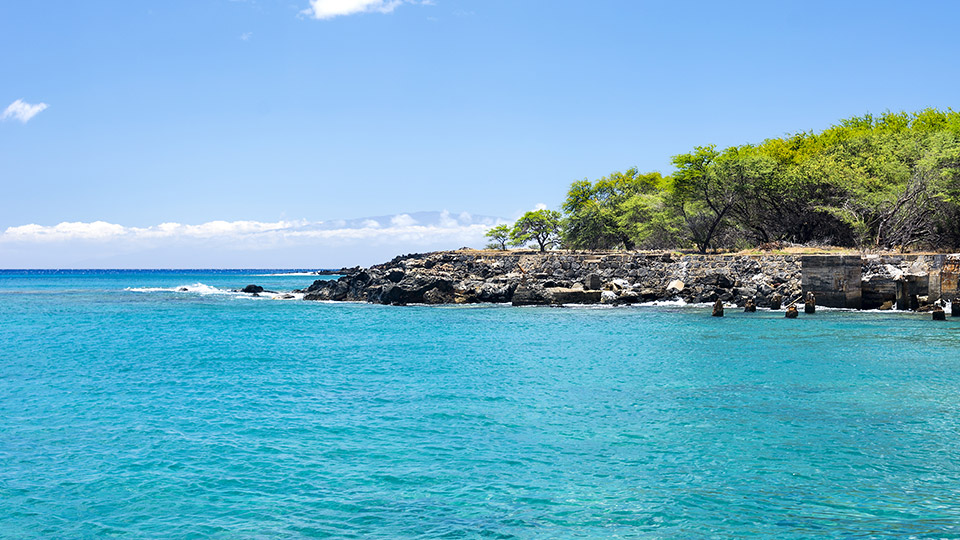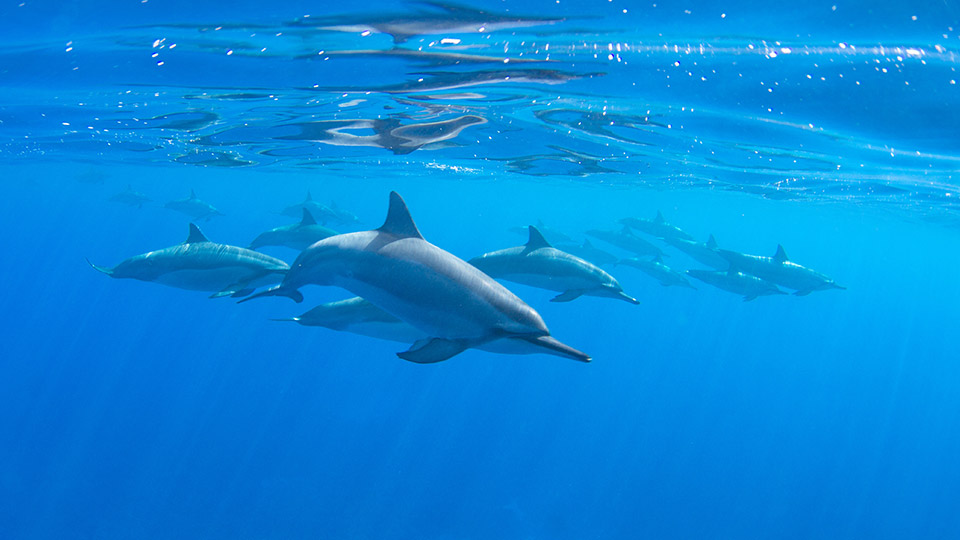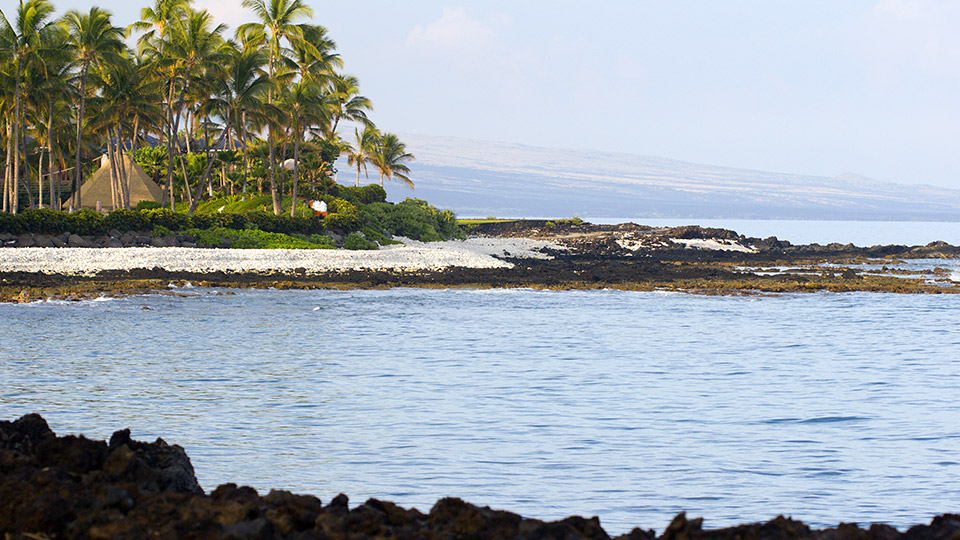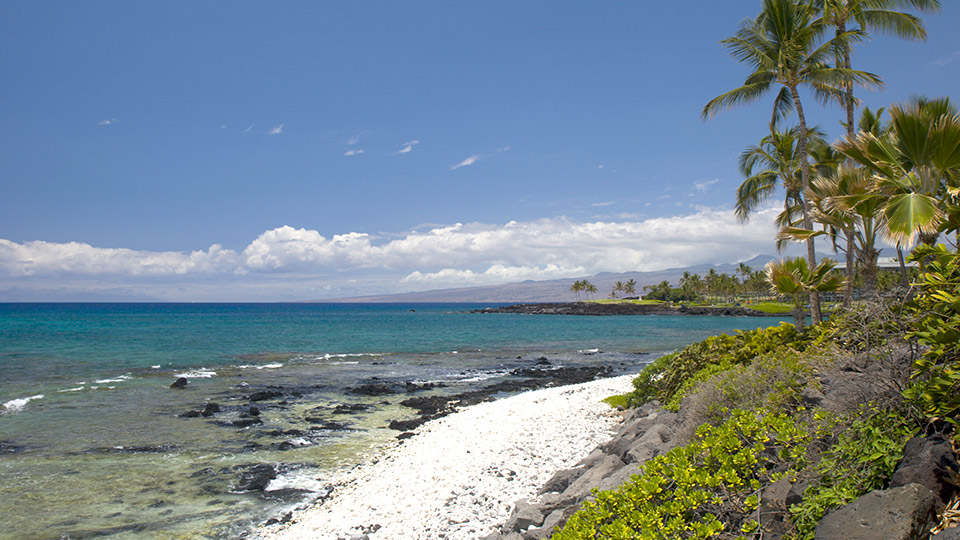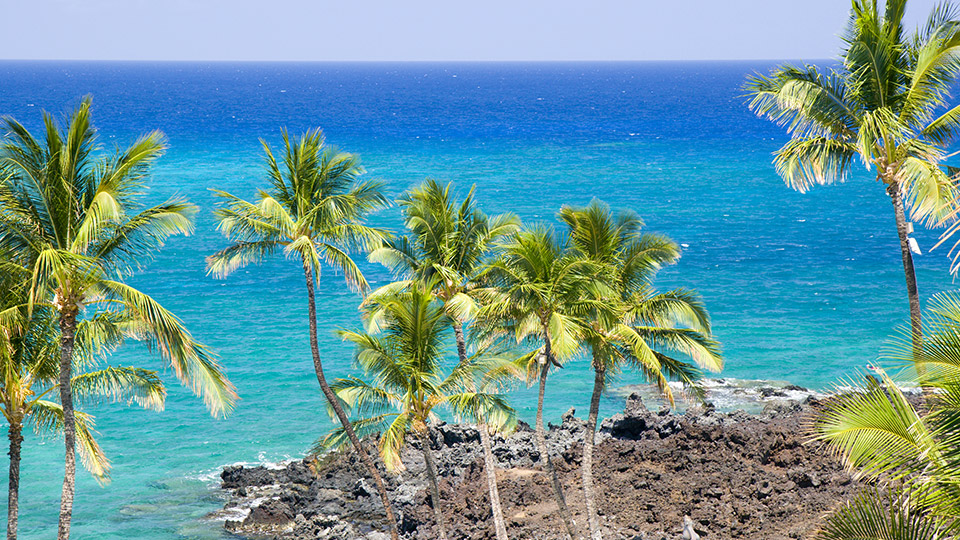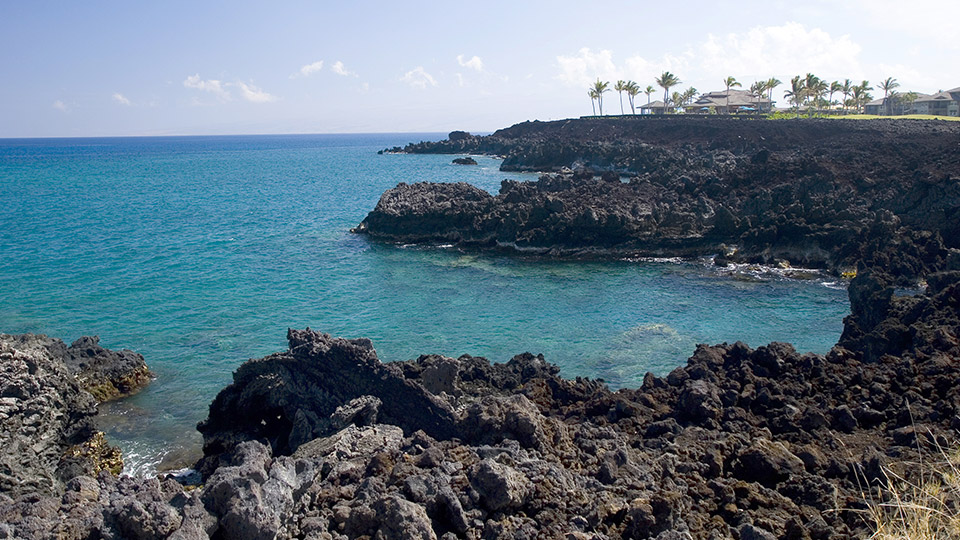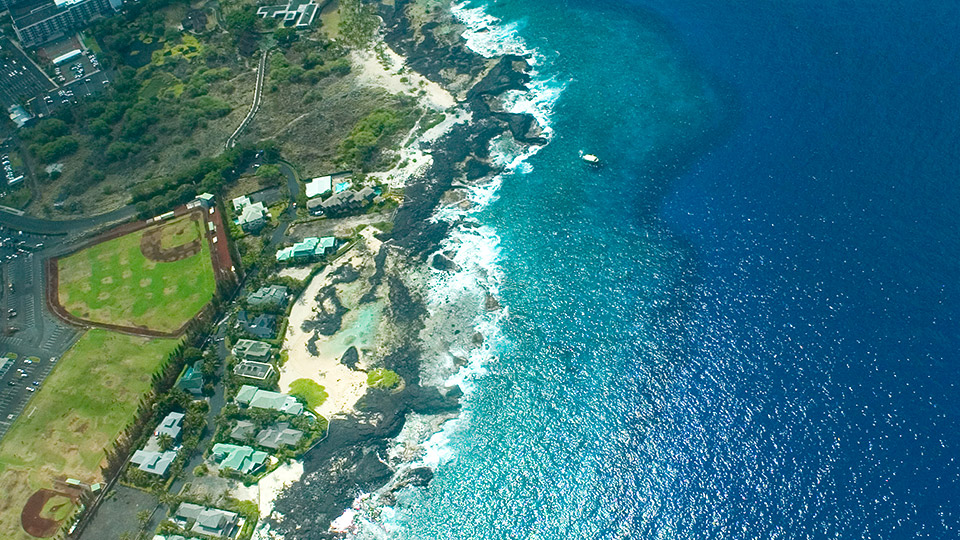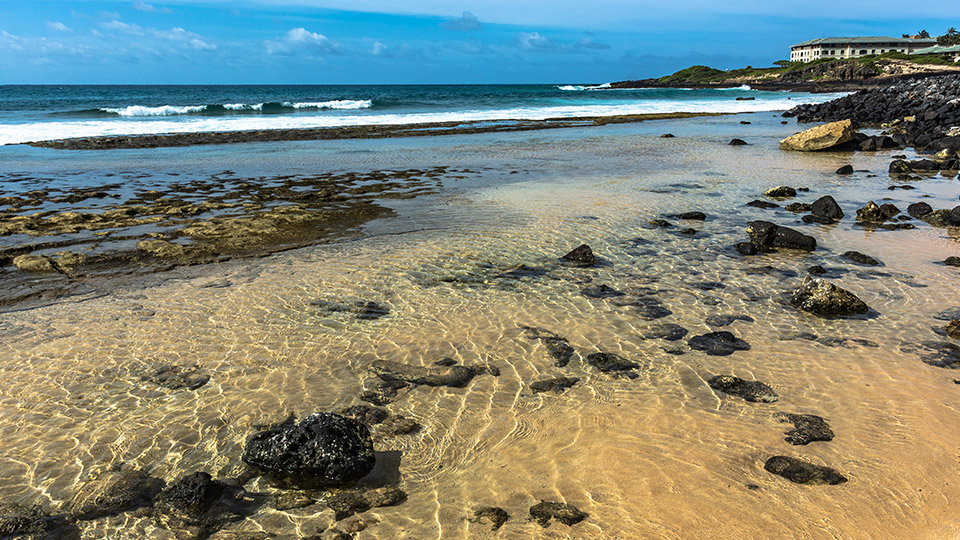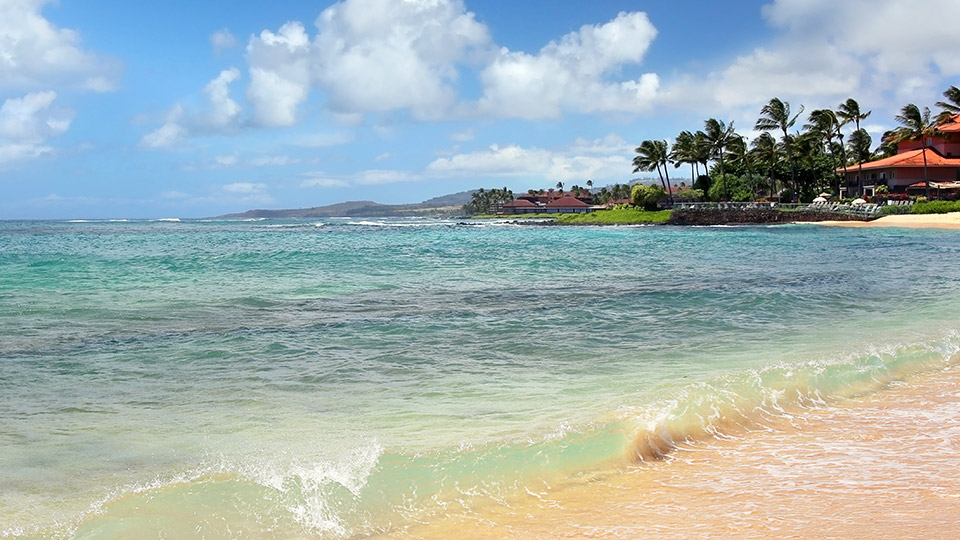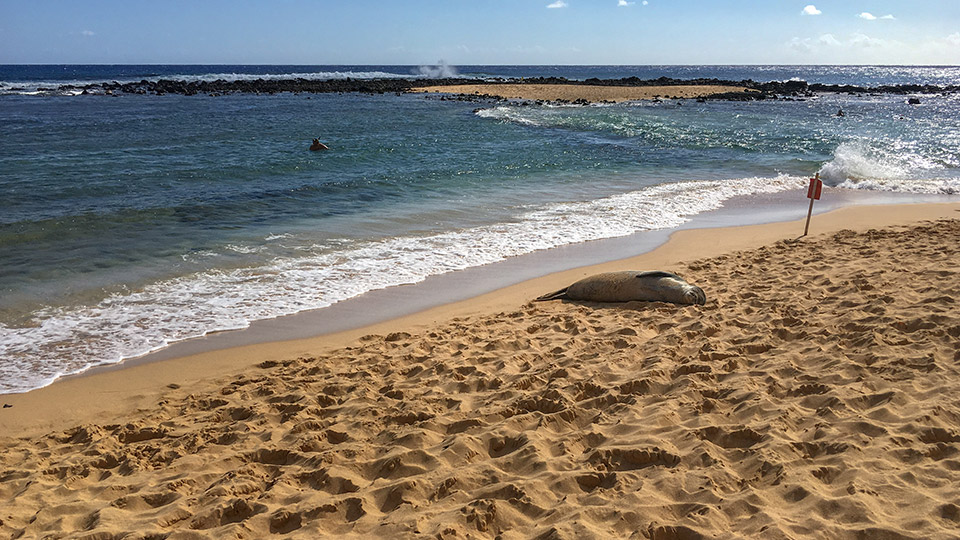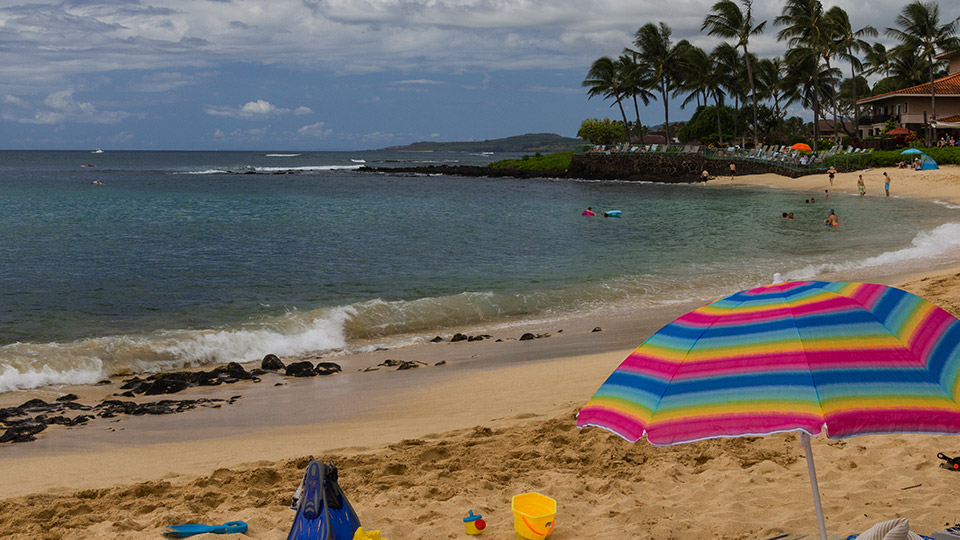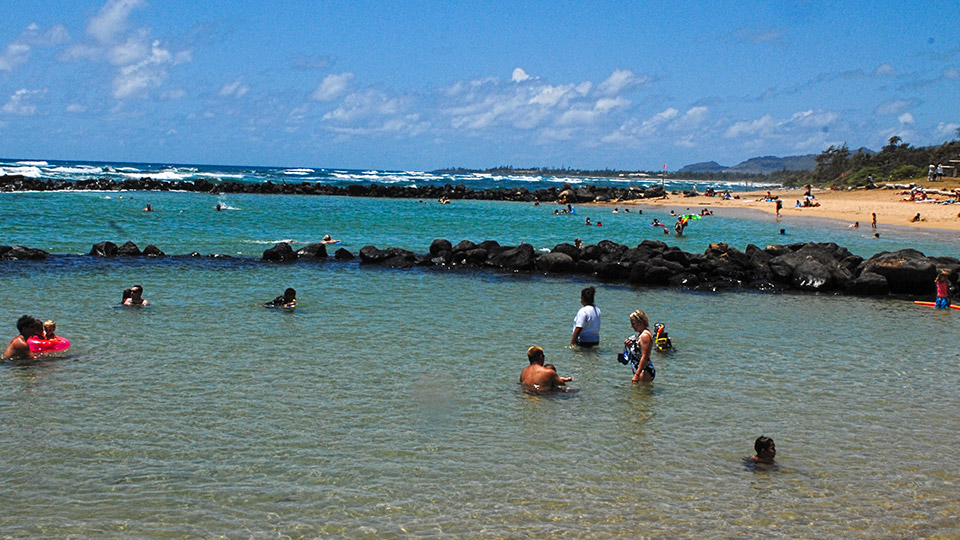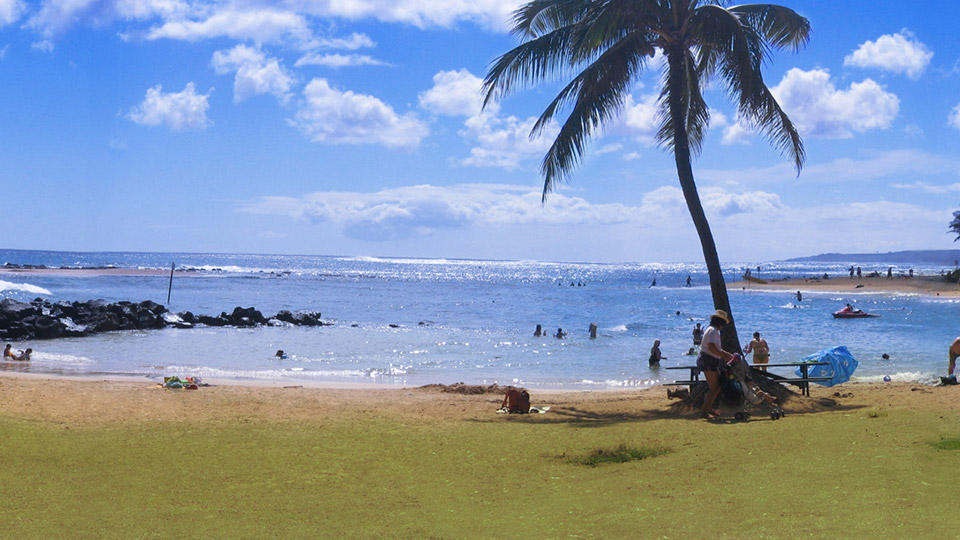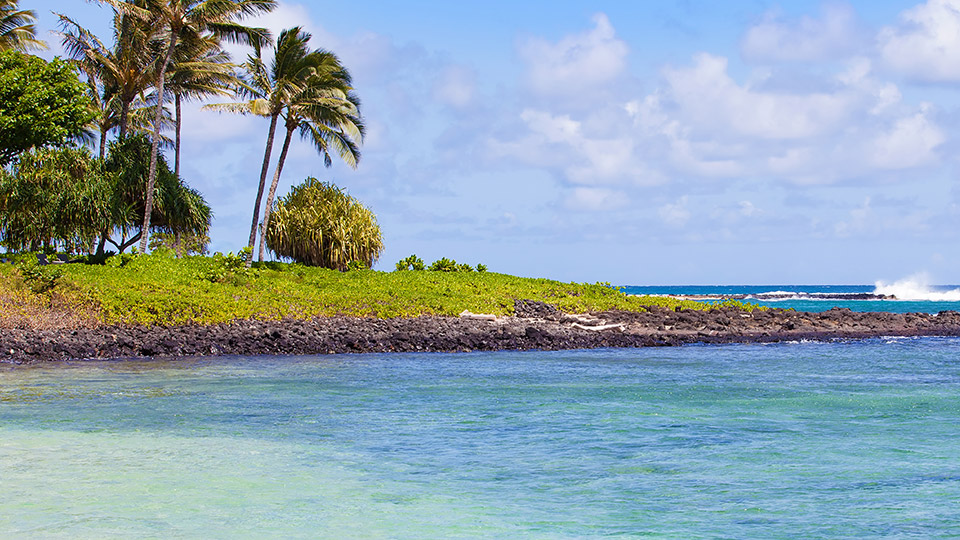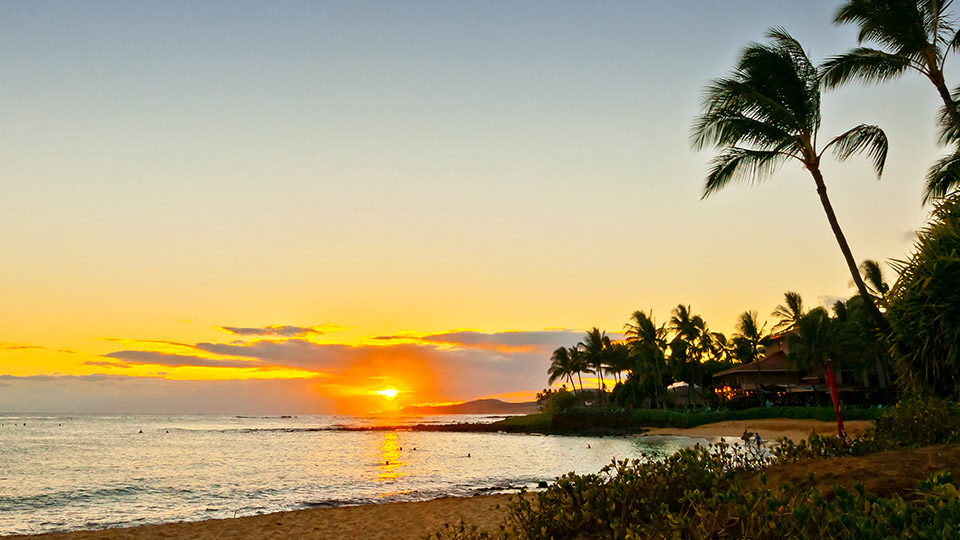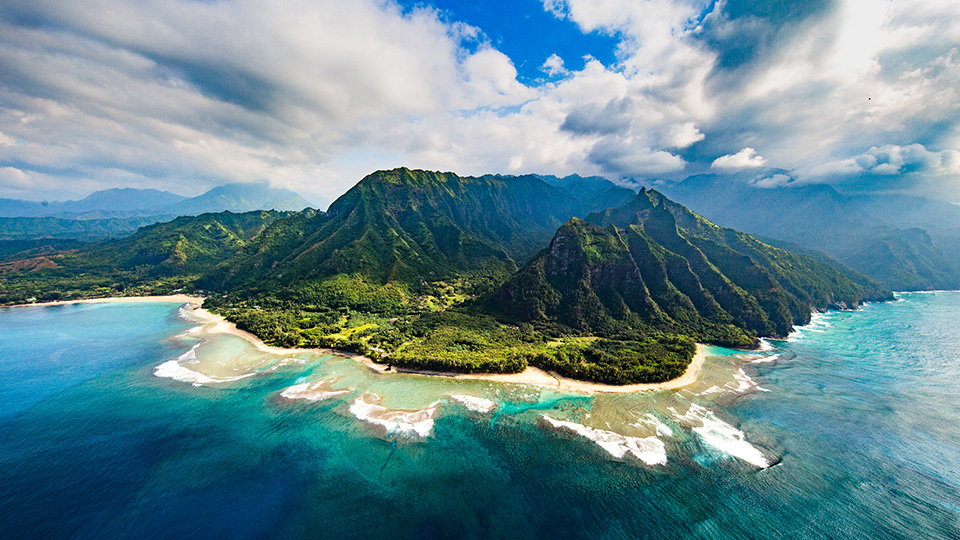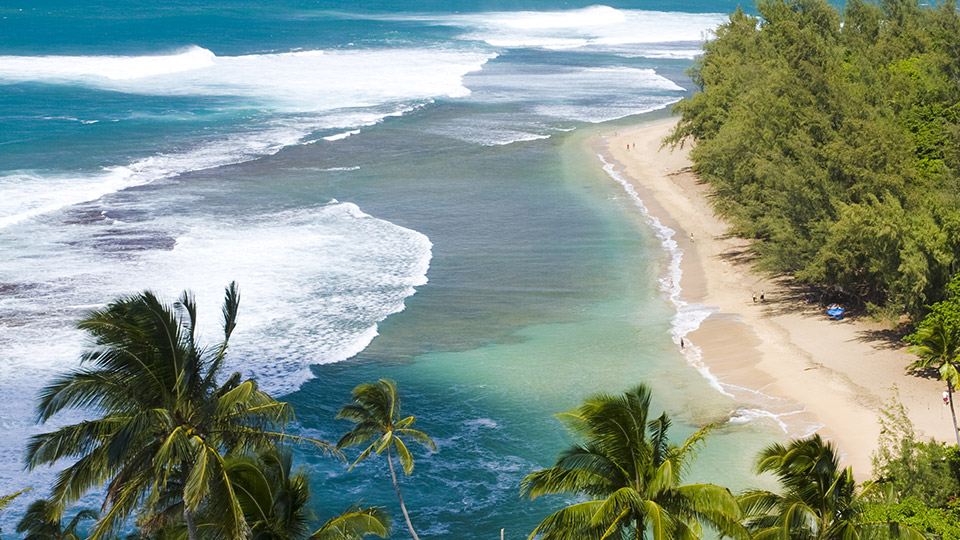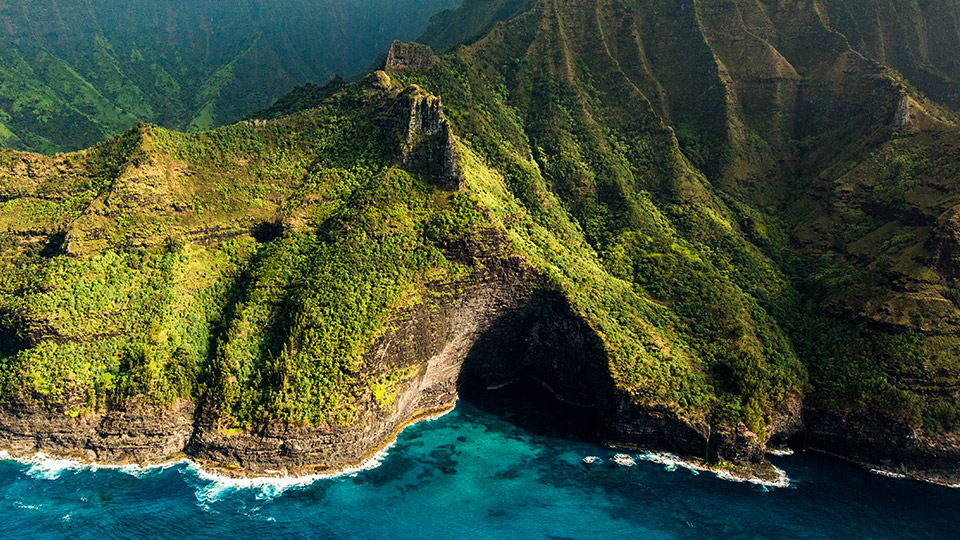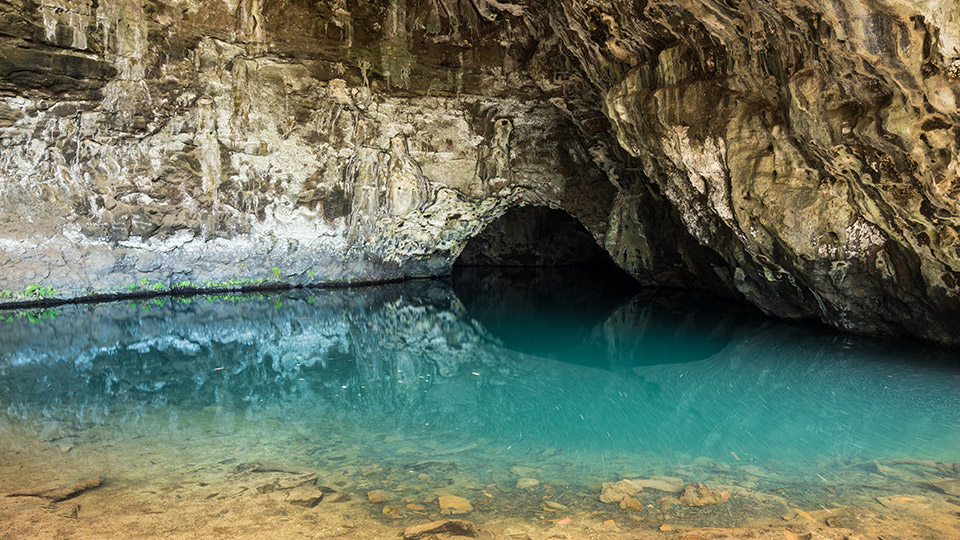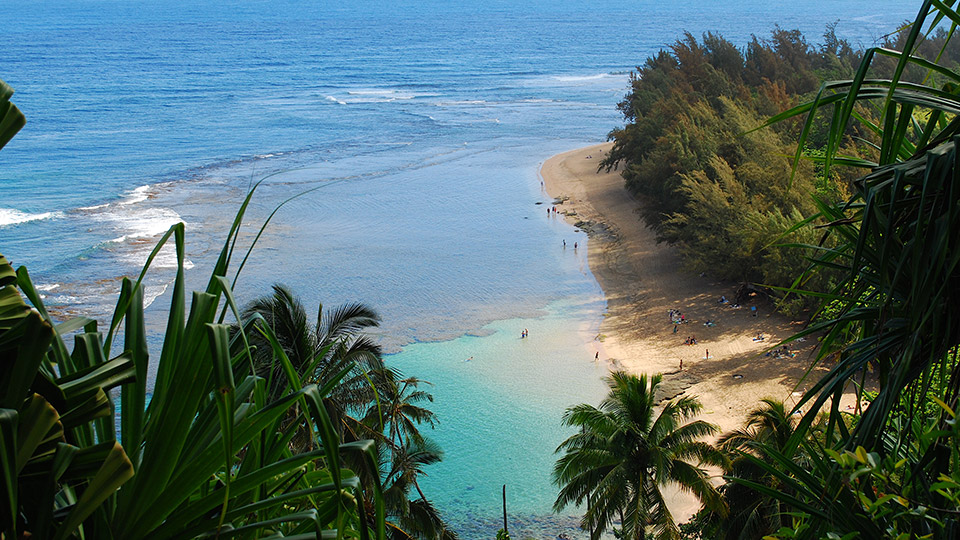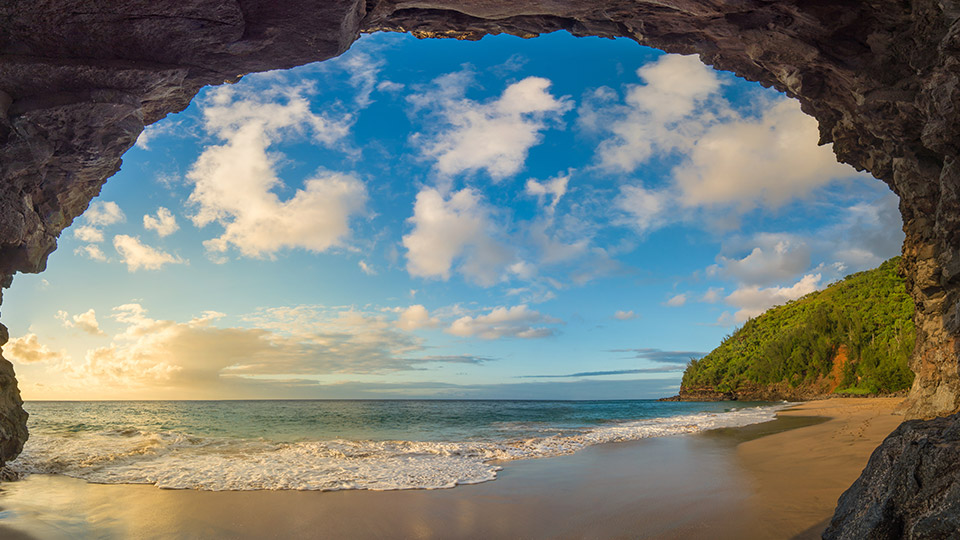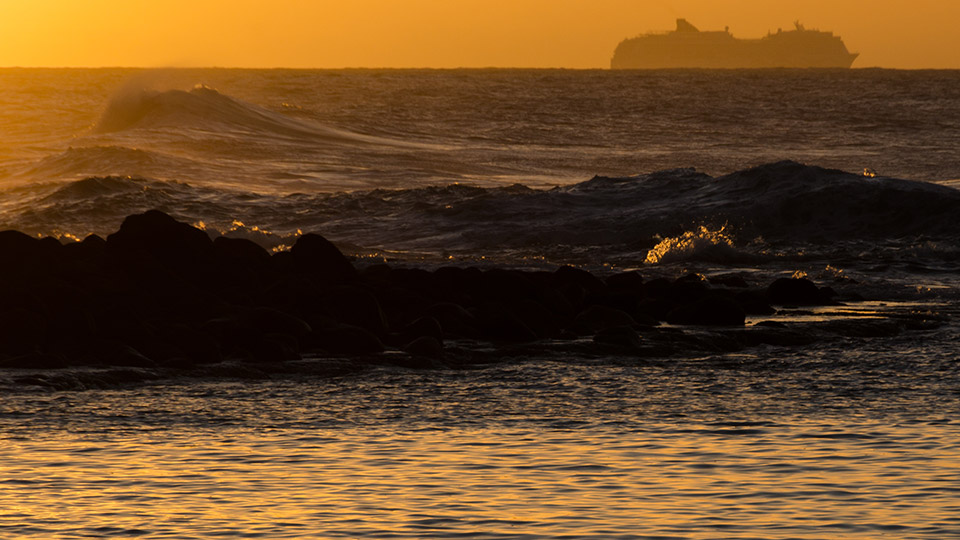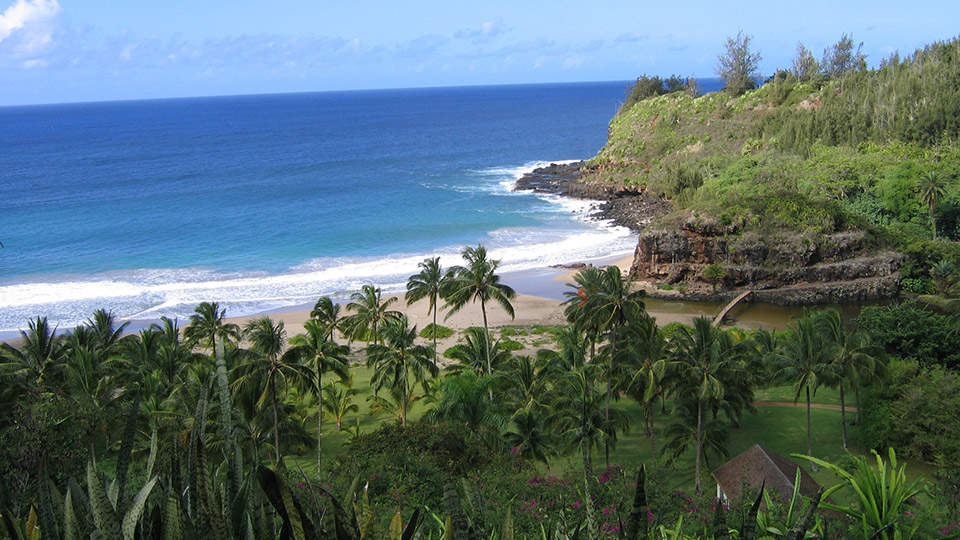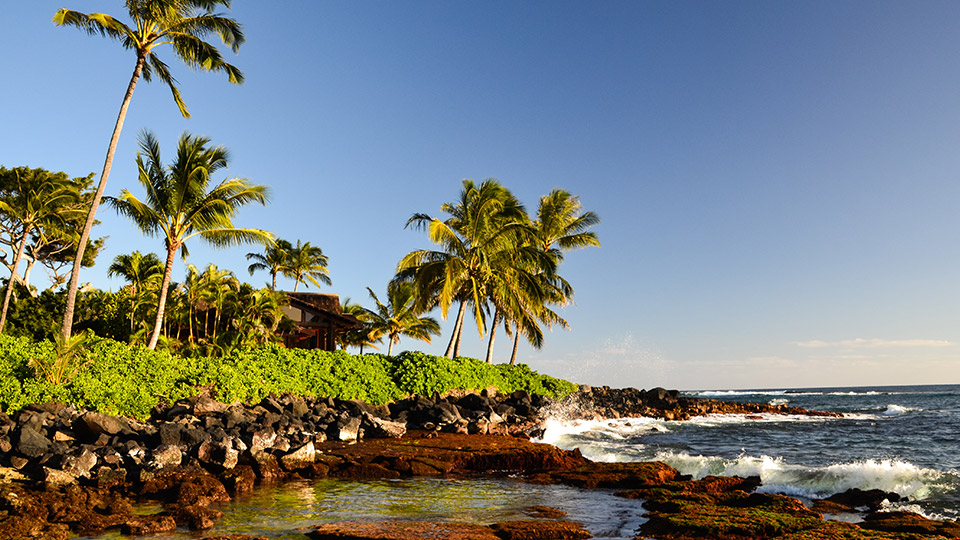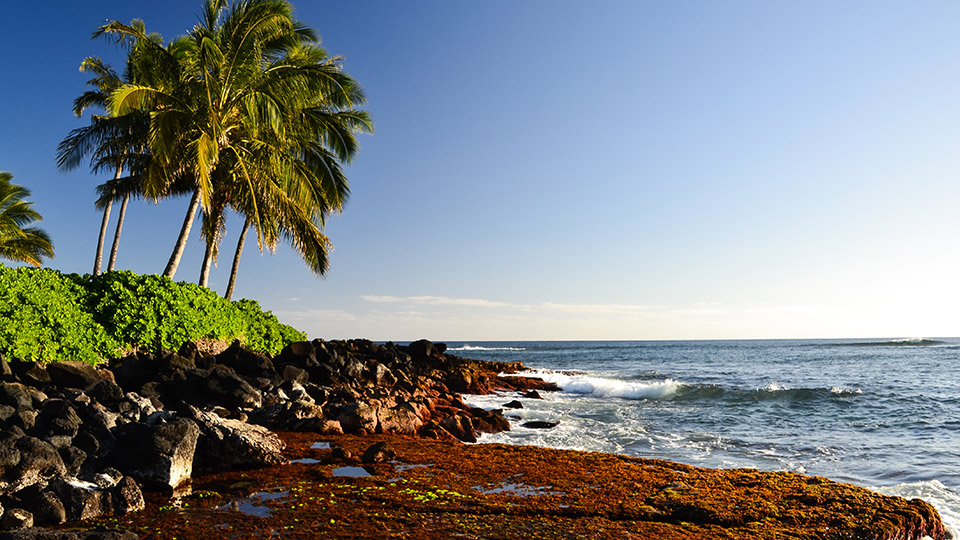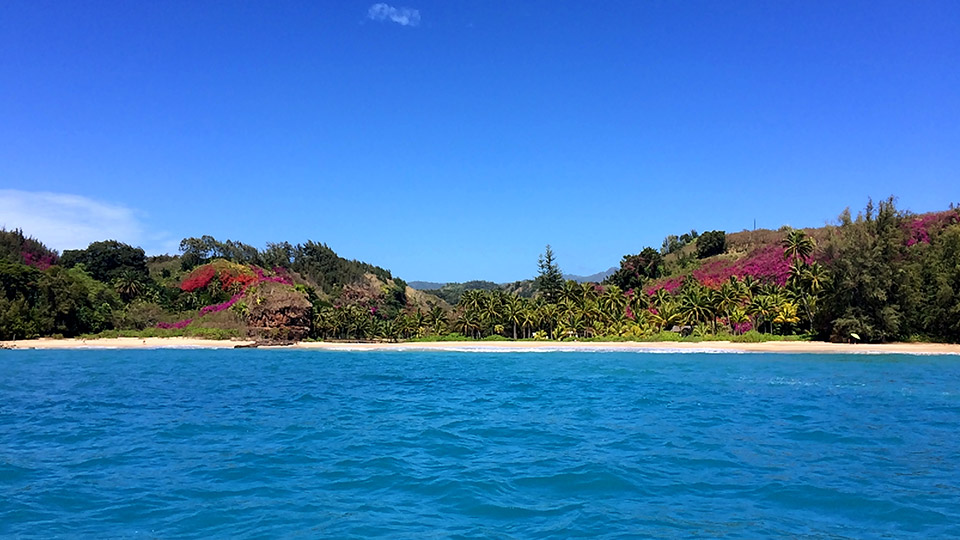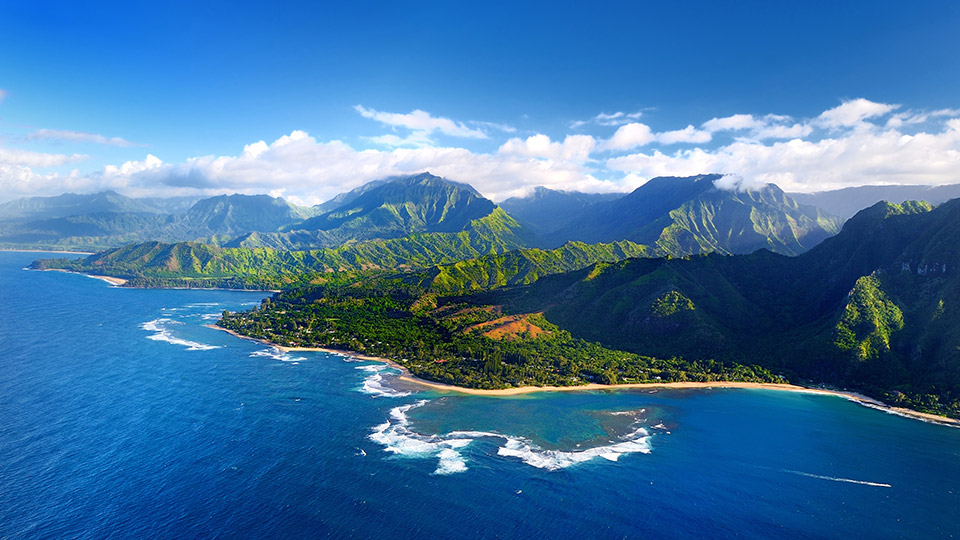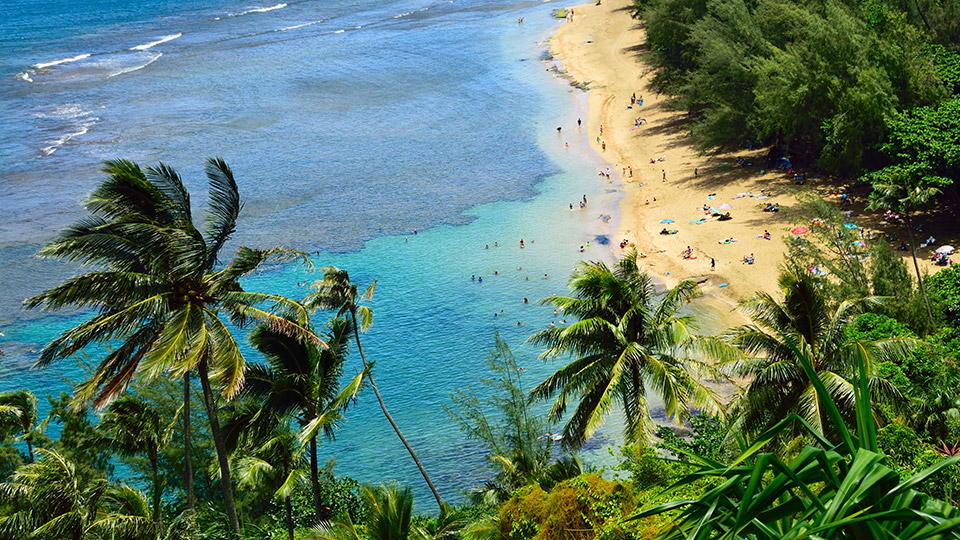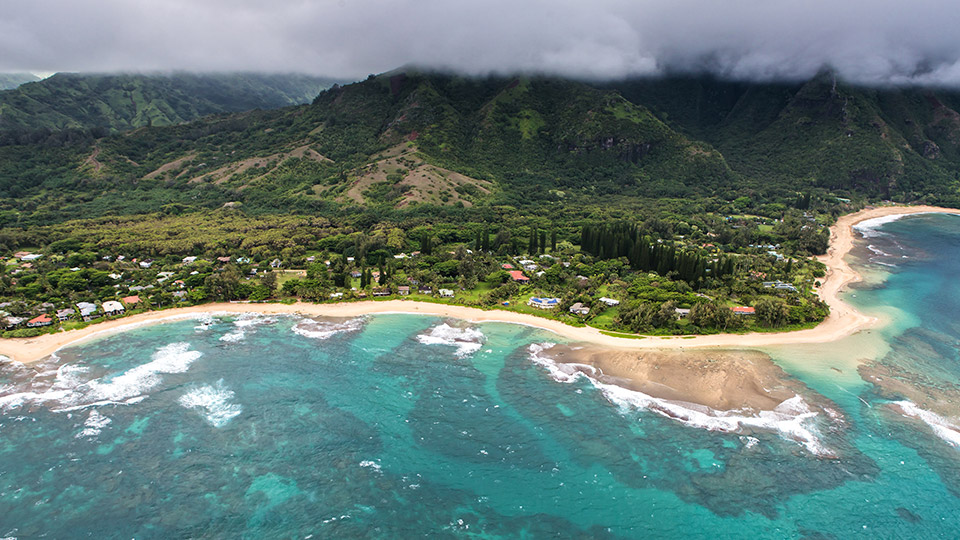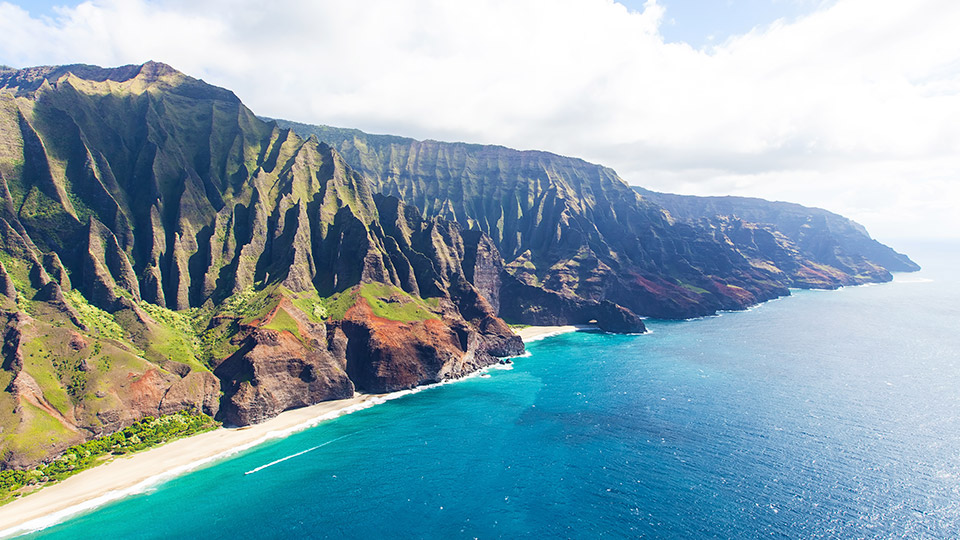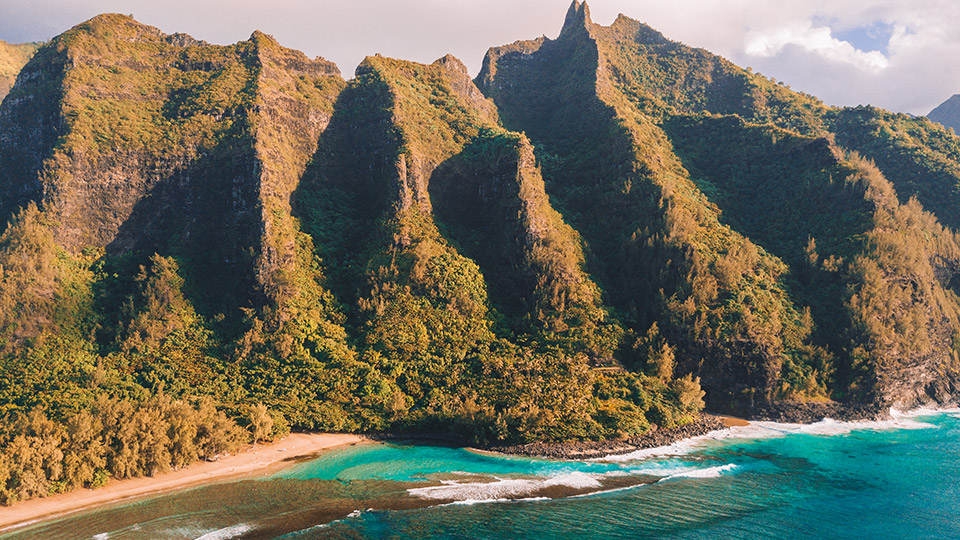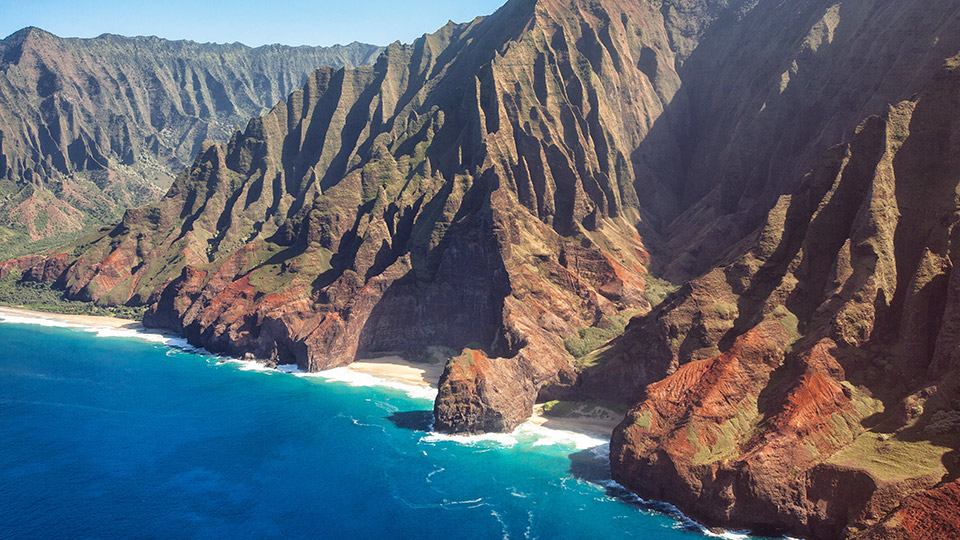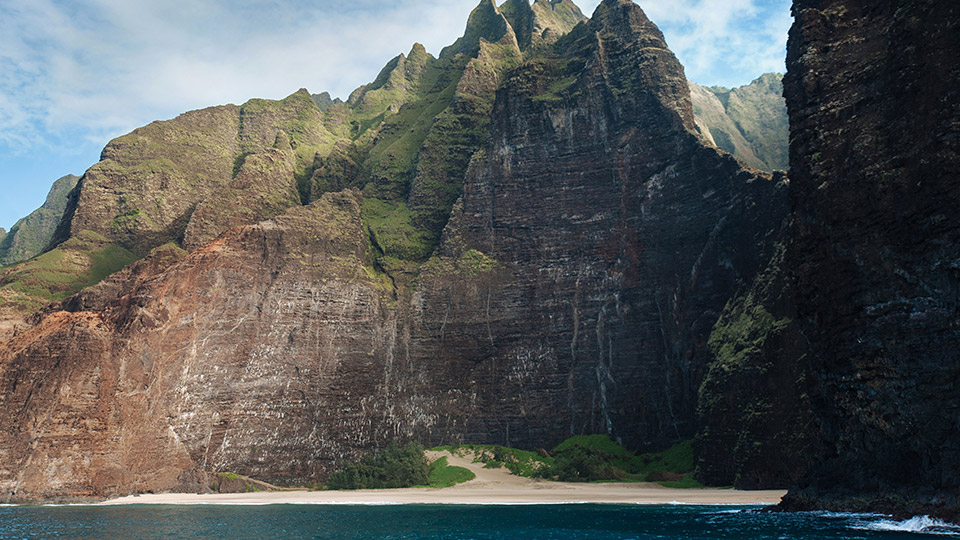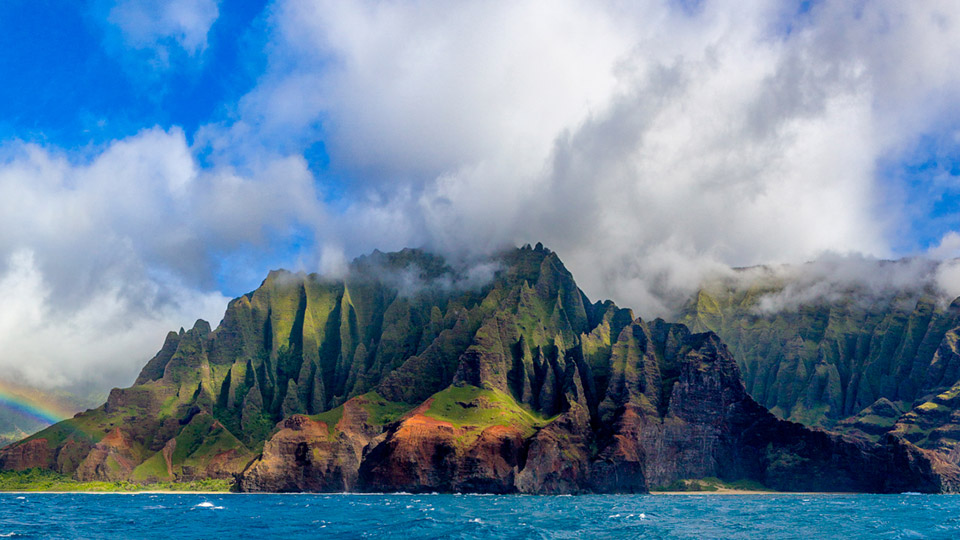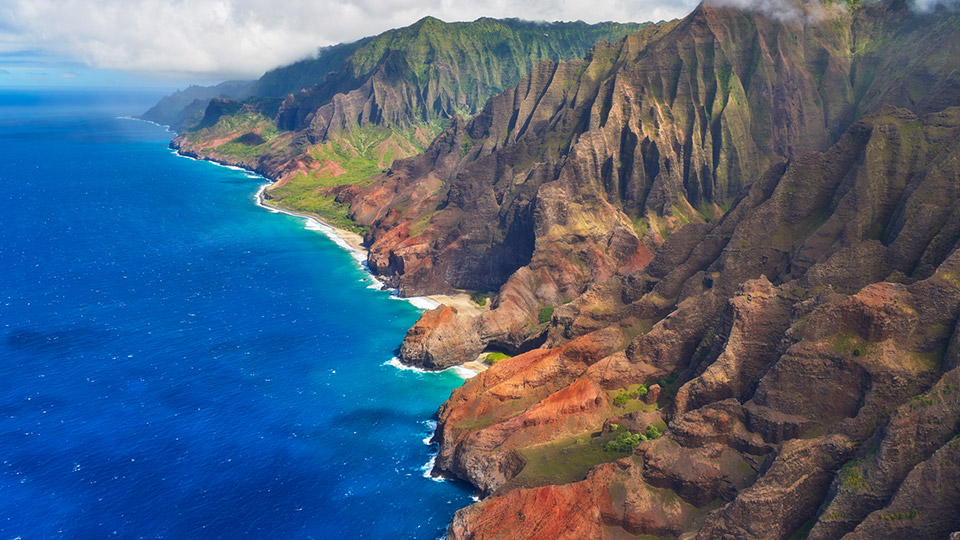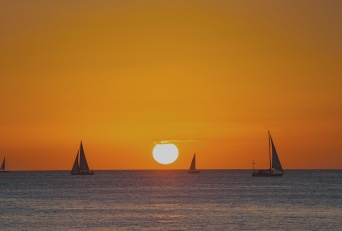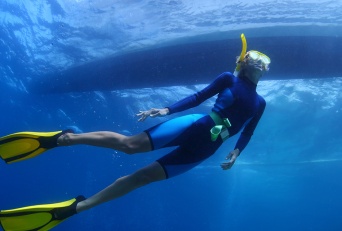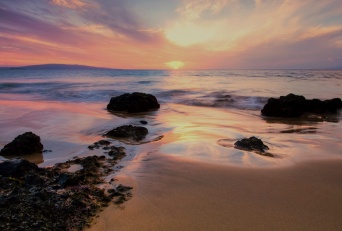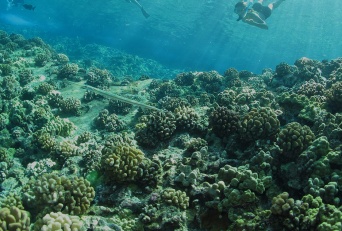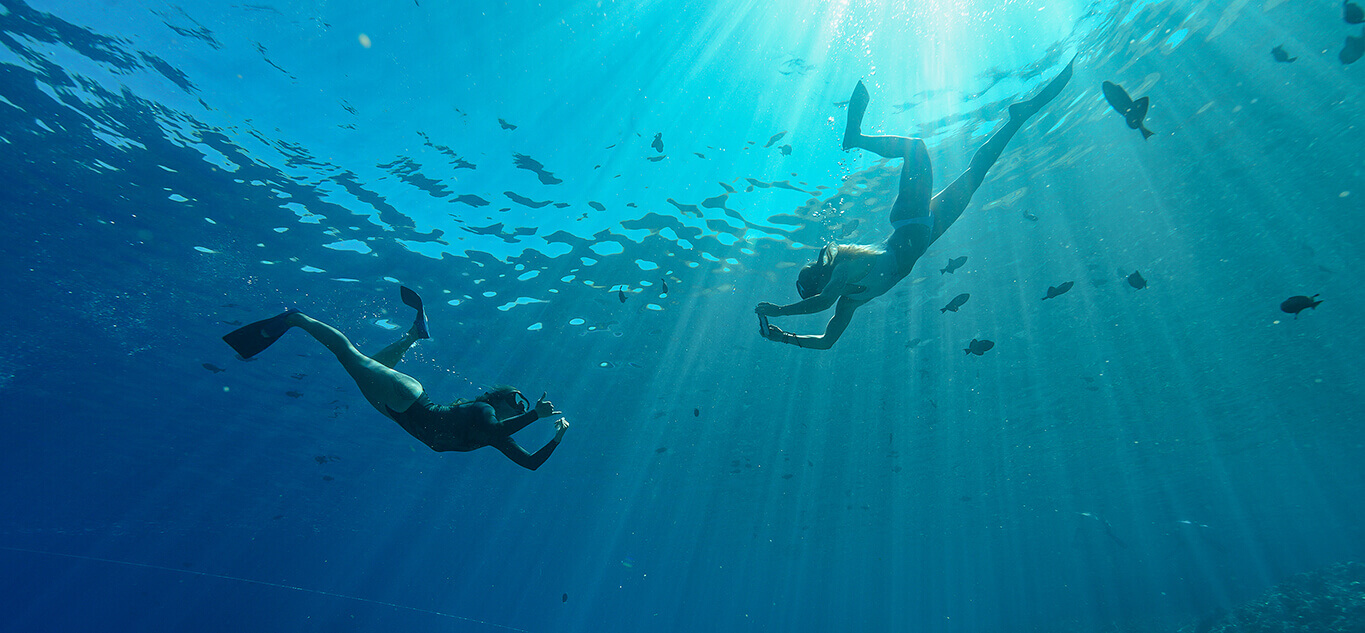
There’s always
a perfect beach
for you to enjoy
snorkeling
Whether you’re a beginner snorkeler who’s just starting to get comfortable in the ocean or a mermaid who loves to dive deep for shells, there’s a beach in Hawaii that is just perfect for you! With our local knowledge, we have come up with Pride of Maui’s list of the spots with the Best Snorkeling in Hawaii.
No matter which island you choose to visit in Hawaii, you are sure to have an excellent time. On each of Hawaii’s main islands (Maui, Big Island, Oahu, Kauai, Lanai, and Molokai), guests will have so many chances to see all of the gorgeous marine life.
Depending on the time of year, you may see a variety of sea life, including the Hawaiian green sea turtles, Hawaiian monk seals, playful spinner dolphins, and of course, the North Pacific humpback whales. These majestic creatures thrive in the waters around Hawaii in the winter. This is in no small part thanks to the Hawaiian Islands Humpback Whale National Marine Sanctuary.
Even on the most basic snorkel tour, guests in Maui’s waters will get to see a wide range of colorful tropical fish and other marine life. There are yellow tangs, butterflyfish, parrotfish, octopuses, manta rays, sea cucumbers, Hawaiian spiny lobsters, moray eels, and so much more.
Come to Hawaii for a relaxing vacation and revel in the sun and the surf! Make sure that you book a Hawaii snorkel tour (and follow our snorkeling tips), or go beach hopping to have a first-rate Hawaii snorkeling adventure!
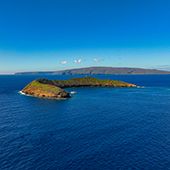
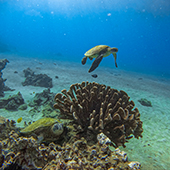
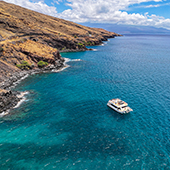
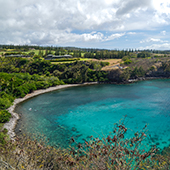
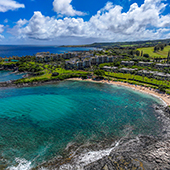
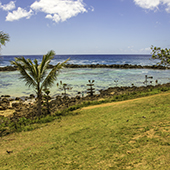
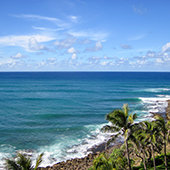
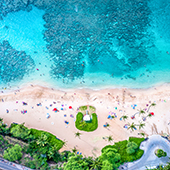
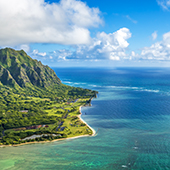
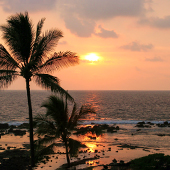
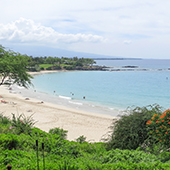
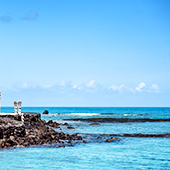
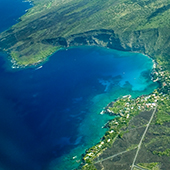
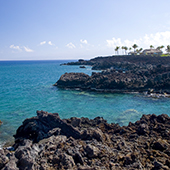
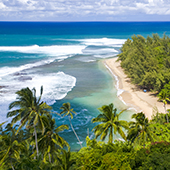
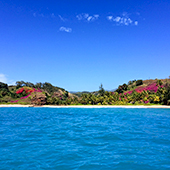
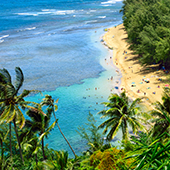
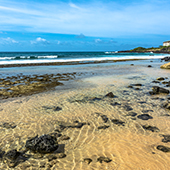
Maui
Molokini Crater
Just 2.5 miles off of Maui’s south shore, the Molokini Crater is a rare and incredible volcanic islet. It is one of just a few of its kind in the whole world and it has been listed by the NOAA as a Marine Life Conservation District Seabird Sanctuary. This partially submerged volcanic crater forms a crescent-shaped islet that is like no other snorkeling spot in the world.
Turtle Town
Turtle Town has the perfect name, as it is the best place to snorkel on Maui if your goal is to see the Hawaiian green sea turtles in action! Thanks to government protection and the ESA (Endangered Species Act), this stretch is a safe home to a dense population of the Hawaiian green sea turtle.
Coral Gardens
Coral Gardens is right next to Olowalu Reef, and just south of Lahaina. This Hawaii snorkel spot is for those who are in the know, and can only be reached by boat on a Maui snorkeling tour.
The Coral Gardens reef was created by a lava flow from the West Maui Mountains, known as Pu’u Kukui. As the lava cooled it formed “fingers,” that flow out into the sea. They are now decorated by coral reef shelves teeming with a throng of marine life.
Honolua Bay
Honolua Bay, also known as “The Bay,” sits on Maui’s northwest coast. In the winter, The Bay is one of the most popular places for seasoned surfers, and hosts renowned international surf contests. From the late spring to the early fall, Honolua Bay is one of the top places to snorkel in West Maui.
Kapalua Bay
Kapalua Bay is one of the most stunning beaches on Maui. It is the perfect West Maui spot to explore while on your vacation in Hawaii. Kapalua is a combination of the words kapa and lua in the ancient Hawaiian language, and means “two borders.” It has the perfect name, as it is positioned right between Oneloa Bay and Honokahua Bay.
Lana’i
Hulopoe Bay
Down in South Lana’i, right next to Manele Bay, is a Hawaii beach that guests will truly adore. Hulopoe Bay is the best beach on Lana’i for some Hawaii snorkeling. Other spots on the island are too close to rugged coastlines for a calm afternoon of snorkeling, and are much better suited for scuba diving. When you snorkel at Hulopoe Bay on Lana’i, expect some depths that slope from 6 to 24 feet.
Molokai
Kumimi Beach aka Murphy’s Beach
On the east side of Molokai, you will find one of the best places to snorkel in all of Hawaii, Kumimi Beach. Known to some as Murphy’s Beach, this beach provides some of the most amazing snorkeling on the island of Molokai. Unlike most Hawaii snorkel spots, Murphy’s is best visited at the mid-high tide, as the water is super shallow here. No matter when you choose to visit this beach, though, you will be blown away!
Kuilima Cove
Kuilima Cove is another great place to snorkel on the North Shore of Oahu. This spot is best when visited during the hot, calm summer months. With that said, it’s also a place that you can count on during the winter because of the way the reef line shelters the cove from the larger waves that arrive from Oahu’s winter swells.
Hanauma Bay
Hanauma Bay is just south of Koko Head Crater on Oahu’s South Shore. It is the most popular snorkel spot in Oahu by far, and it is now known as the Hanauma Bay Nature Preserve. After years of use, and millions of snorkelers, the site has become a conservation zone. It’s closed every Tuesday so that the fish and other marine life can rest and feed in peace.
Turtle Canyons
Just south of Waikiki Beach, Turtle Canyons is one of the top places to scuba dive and snorkel in Oahu. It can only be reached by boat, so be sure to book an Oahu snorkel cruise out to this spot ahead of time. All snorkel tours to Turtle Canyons depart from Waikiki Beach.
Big Island
Manta Ray Village
Snorkeling at Manta Ray Village on the Big Island is one of the most amazing Hawaii adventures on which anyone could embark. Please note that this site is for experienced snorkelers only. Guests must be strong swimmers and comfortable in the open ocean during the evening hours.
Mauna Kea Beach
Mauna Kea Beach in Waimea, aka Kauna’oa Beach, is one of the best places to snorkel on the Big Island. This spot is perfect for kids, beginners, and experienced snorkelers. The best thing about this Big Island snorkel spot is the water. It is almost always calm, and the ocean clarity in the mornings is unmatched. You are sure to see lots of action here!
Honaunau Bay
Just south of Captain Cook on the Kona side of the Big Island is a spot that will leave every guest in a state of pure bliss: Honaunau Bay! The place is so gorgeous, and the water here is full of marine life, showing off the great vitality of the Pacific Ocean.
Kealakekua Bay
In the ancient Hawaiian language, Kealakekua means “pathway of the gods.” Hawaii’s Kealakekua Bay is an underwater state park, a marine life sanctuary, and the site of the historic Captain Cook Monument. For the best experience at this spot, guests should make sure to book a Big Island snorkel tour.
South Kona
There are so many unique snorkel sites to visit in the South Kona area of the Big Island. Two that you must see are Pu’u Ohau aka Red Hill (Coral Gardens, Driftwoods, Nudibranch, Ridges), and Pali Kaholo (Rob’s Reef & Turtle Rock). Those who would like to snorkel in South Kona must book a South Kona Snorkel Tour.
Kauai
Poipu Beach Park
The Island of Kauai has some astounding snorkeling spots. Finding the perfect place to snorkel on Kauai can be tough to do on your own though, as there are some rough ocean conditions and seasonal changes.
When you plan to snorkel on Kauai, make sure to ask the lifeguards about the water conditions and to follow all of the safety rules on the beach signage. If you’re beach hopping on Kauai and trying to find the best place for beginners to snorkel, make sure to head to Poipu Beach.
Ke’e Beach
Ke’e Beach sits at the end of the road on Kauai’s North Shore, near the entrance to the Napali Coast’s Kalalau Trail. During the late spring and summer months, it’s a calm beach cove that is perfect for beginners and families who have small children. The beach has a lifeguard, picnic tables, restrooms, and freshwater showers.
Lawai Beach
Lawai Beach is also known as “Beach House Beach” since it’s right next to a restaurant that overlooks the bay. During the late spring and summer months, Lawai Beach is a great place for new snorkelers and families who are looking to have some fun in the sun. Snorkeling at Lawai Beach is easy, fun, and convenient.
Na Pali Coast
Last but not least, anyone who loves to snorkel in Hawaii should make sure to book a Na Pali Coast snorkel tour in Kauai. The Na Pali Coast is found on the most northern point of Kauai’s North Shore, and Kauai is the top of the chain of Hawaiian Islands. Here you can find an underwater forest full to the brim with Hawaii marine life.
Pride of Maui’s
Top 20 Places to
Snorkel in Hawaii
Mahalo for reading Pride of Maui’s Top 20 Places to Snorkel in Hawaii! We wish you an amazing Hawaiian vacation and invite you to share our list and your experiences with your family and friends.
Hawaii Snorkeling FAQ
Where can I rent snorkeling equipment in Hawaii?
There are many Snorkel Bob’s locations around the islands, along with Boss Frog’s, The Snorkel Store, and many other vendors near essentially every beach and shopping center. They’re not hard to spot!
What should I do if I get stung by an eel?
If you’re stung by an eel in Hawaii, it’s important to first stop the bleeding, clean the wound, and seek medical attention. Eel bites, particularly from moray eels, can cause serious lacerations and infections due to toxins in their saliva and slime.
How do I spot dangerous currents in the water?
Dangerous currents, like rip currents, can be identified by looking for several key indicators in the water: darker, deeper-looking water, a rippled surface surrounded by calmer water, breaks in the wave pattern, and lines of foam or debris moving out to sea. These currents are often found near structures like piers or sandbars.
Should I be worried about shark attacks in Hawaii?
While shark attacks in Hawaii are rare, it’s still a good idea to be aware of the potential risks and take precautions. The average number of shark incidents per year in Hawaii is relatively low, but fatal attacks are still possible. Understanding shark behavior and taking safety measures can significantly reduce your risk of encountering a shark while enjoying the ocean.
Is snorkeling in Hawaii dangerous?
It can be, especially if you’re in poor physical condition and choose a more dangerous location (like going out too far, especially alone). However, it is generally a safe and enjoyable activity for those who follow the guidelines and stay with their groups, and make sure their equipment fits well and they know how to use it properly. Just read through our snorkeling safety page before you go!
